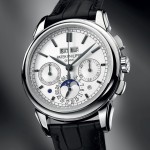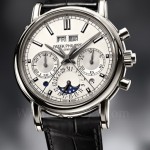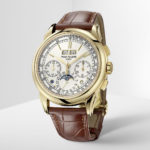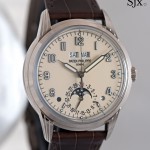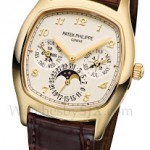In-Depth: Patek Philippe Ref. 5236P In-line Perpetual Calendar
Entirely new from display to base calibre.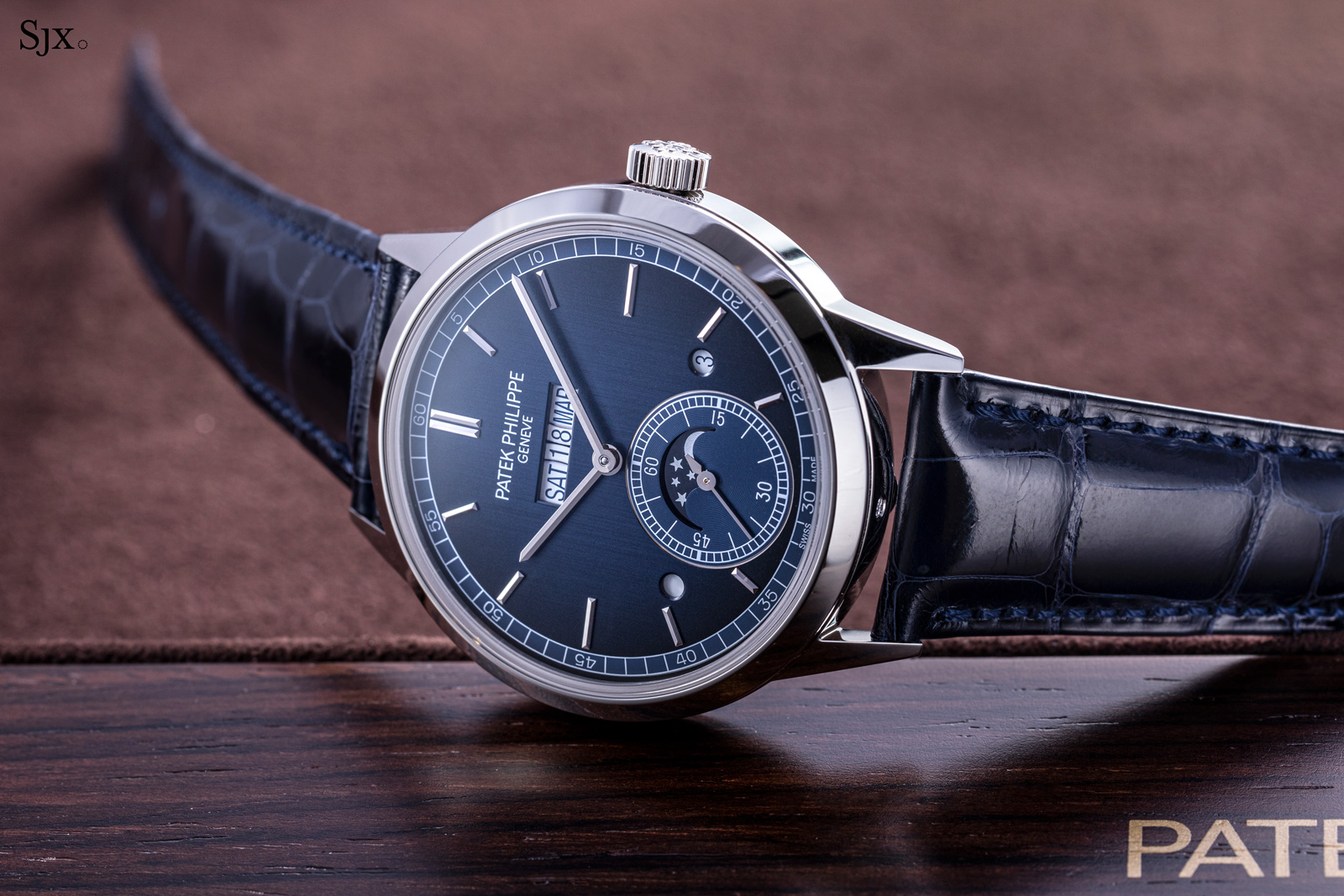
Patek Philippe introduced a bunch of notable new models this year, including the recent “Advanced Research” Minute Repeater Ref. 5750P. The most notable amongst its accessible complications – accessible in a relative sense – is unquestionably the In-line Perpetual Calendar ref. 5236P, an all-new model with a movement developed from the ground up.
The ref. 5236P takes its cues from the “linear” perpetual calendar pocket watches of the 1950s and 1960s, namely the ref. 725 with perpetual calendar only, and the refs. 699, 843, and 844 that also included a minute repeater. The nickname stems from the calendar display within a single, horizontal window under 12 o’clock, which instantly sets such watches apart from conventional calendar displays that rely on multiple sub-dials.
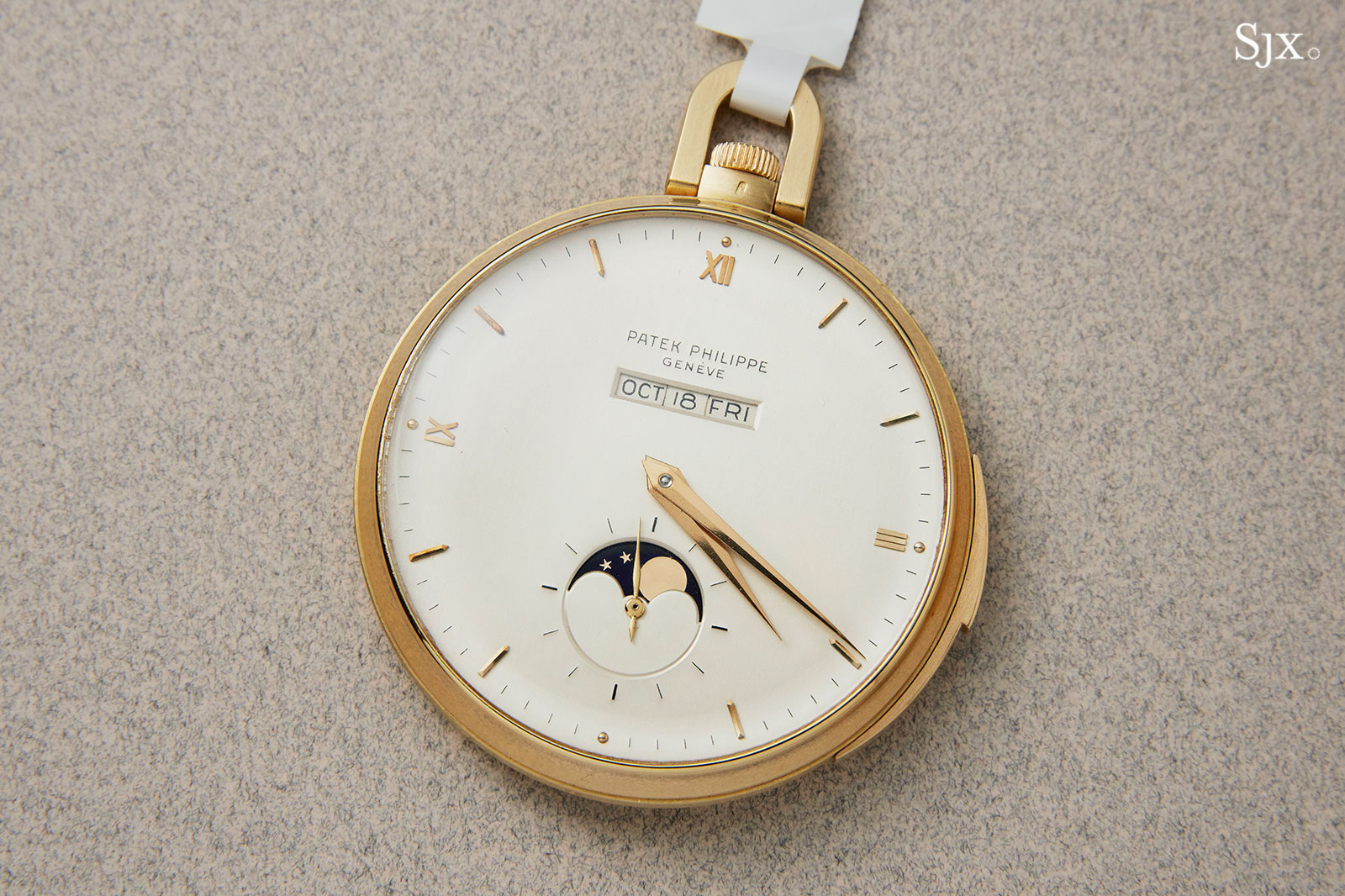
A ref. 699 from 1956 with linear calendar and minute repeater
This same straight-line calendar display has been reproduced on the ref. 5236P – a substantial feat considering its compact size and relatively large calendar window. It was realised with an all-new calendar mechanism with a cleverly designed display, but one still constructed as a traditional, “grand lever” calendar.
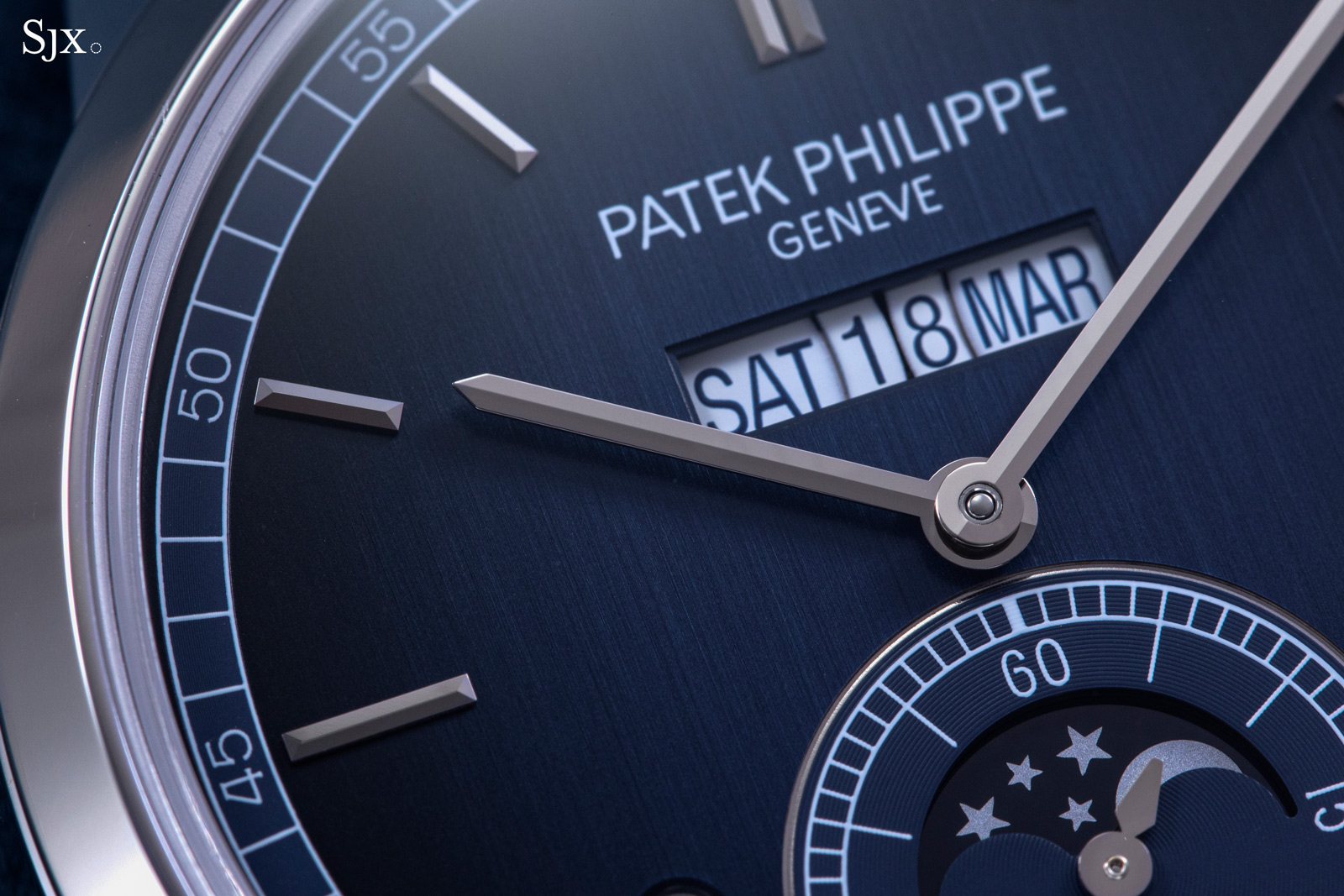
Initial thoughts
Despite its vintage inspiration, the ref. 5236P looks and feels like a contemporary watch, especially because of its colours and size.
In the hand the ref. 5236P is substantial, both in diameter and weight. At 41.3 mm it’s one of the biggest perpetual calendar watches Patek Philippe makes. In fact, it is the largest one without another complication (multi-complications like the Sky Moon ref. 6002 and ref. 5208 are of course much wider and thicker).
But in typical Patek Philippe style, the ref. 5236P manages to be relatively thin at a bit over 11 mm high so it has a reasonably elegant profile despite its diameter.
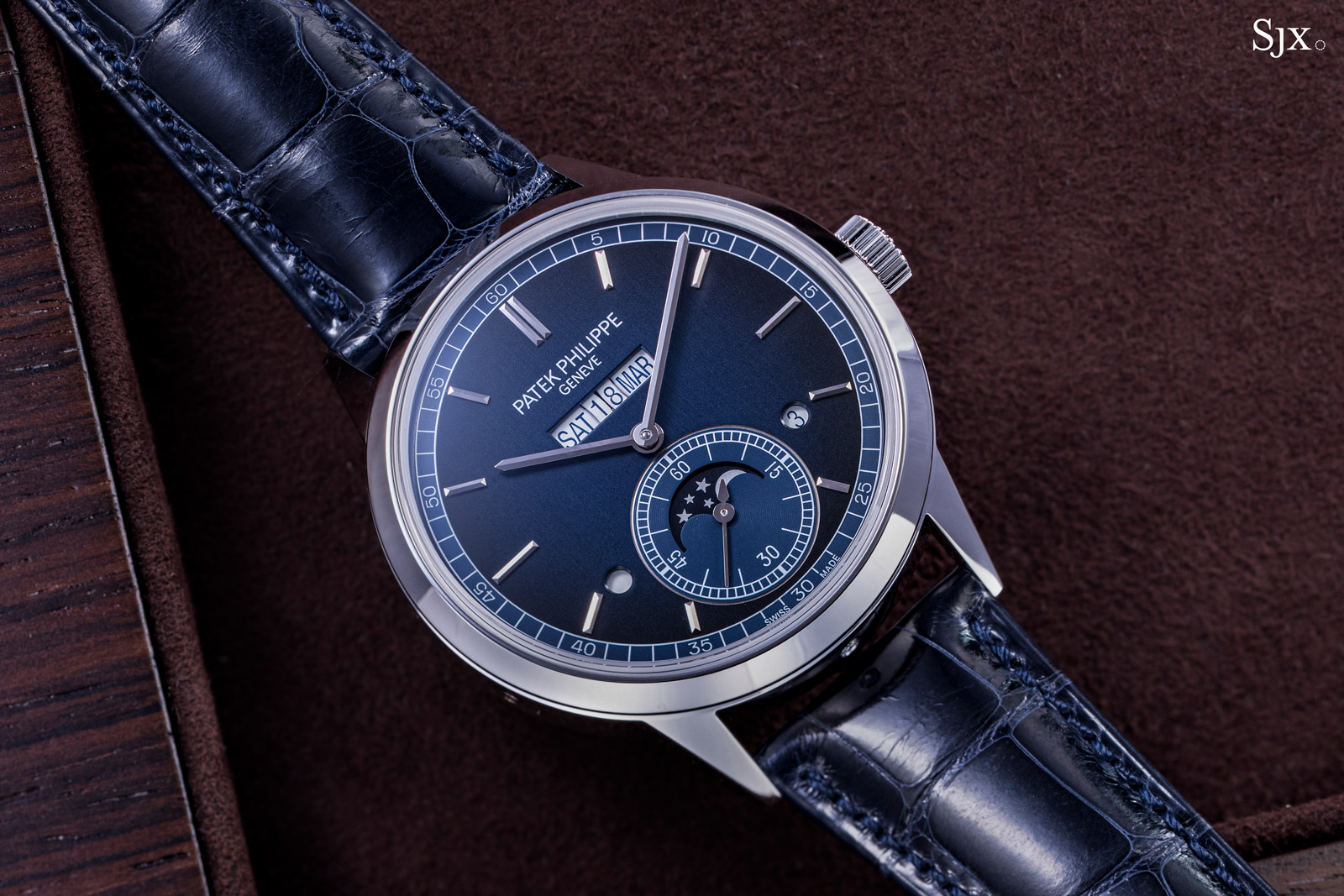
The styling of the ref. 5236P is similar to the ref. 5235 Annual Calendar, which immediately gives it a clean, modern. That would already make it unusual amongst the brand’s calendar line up, but the shades-of-blue livery of the ref. 5236P sets it apart even further.
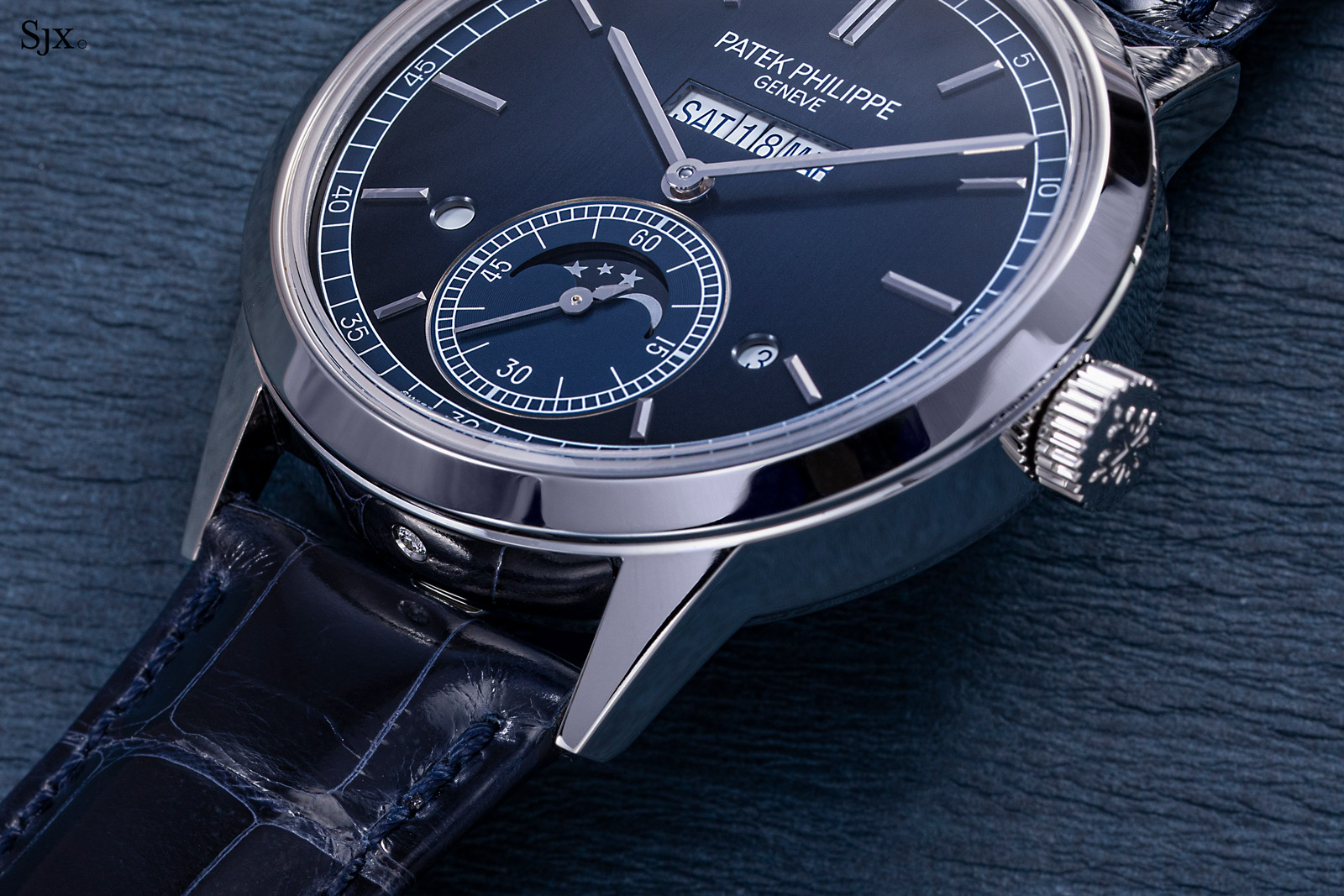
Although the dial is predominantly blue, it is executed with nuance. The central portion is a graduated blue, while the minute track and calendar markings are separate shades of blue. All that might be too much blue for some, but it is certain that Patek Philippe will eventually introduce variants of this model in other colours.
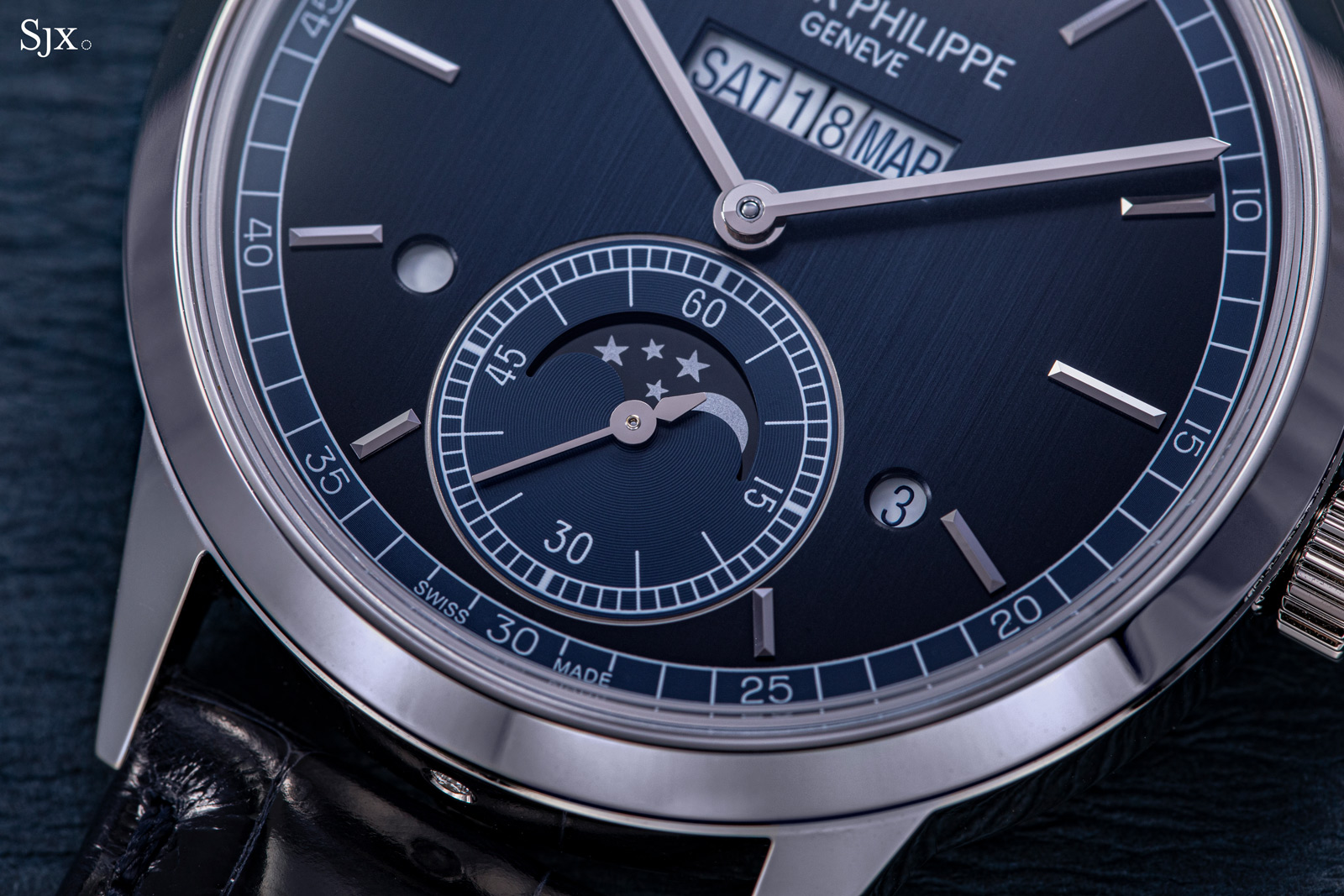
Though new in many ways, the base movement inside the ref. 5236P is evidently derived from the calibre inside the ref. 5235 annual calendar. The two share a similar architecture, although the cal. 31-260 PS QL of the ref. 5236P has been made more elaborate in terms of aesthetics, which makes it more appealing.
Notably, this is the biggest perpetual calendar movement that Patek Philippe makes – it is also the most recent, explaining why – which means it is also the calibre that fills the case best, giving it an attractive, balanced look from the back.
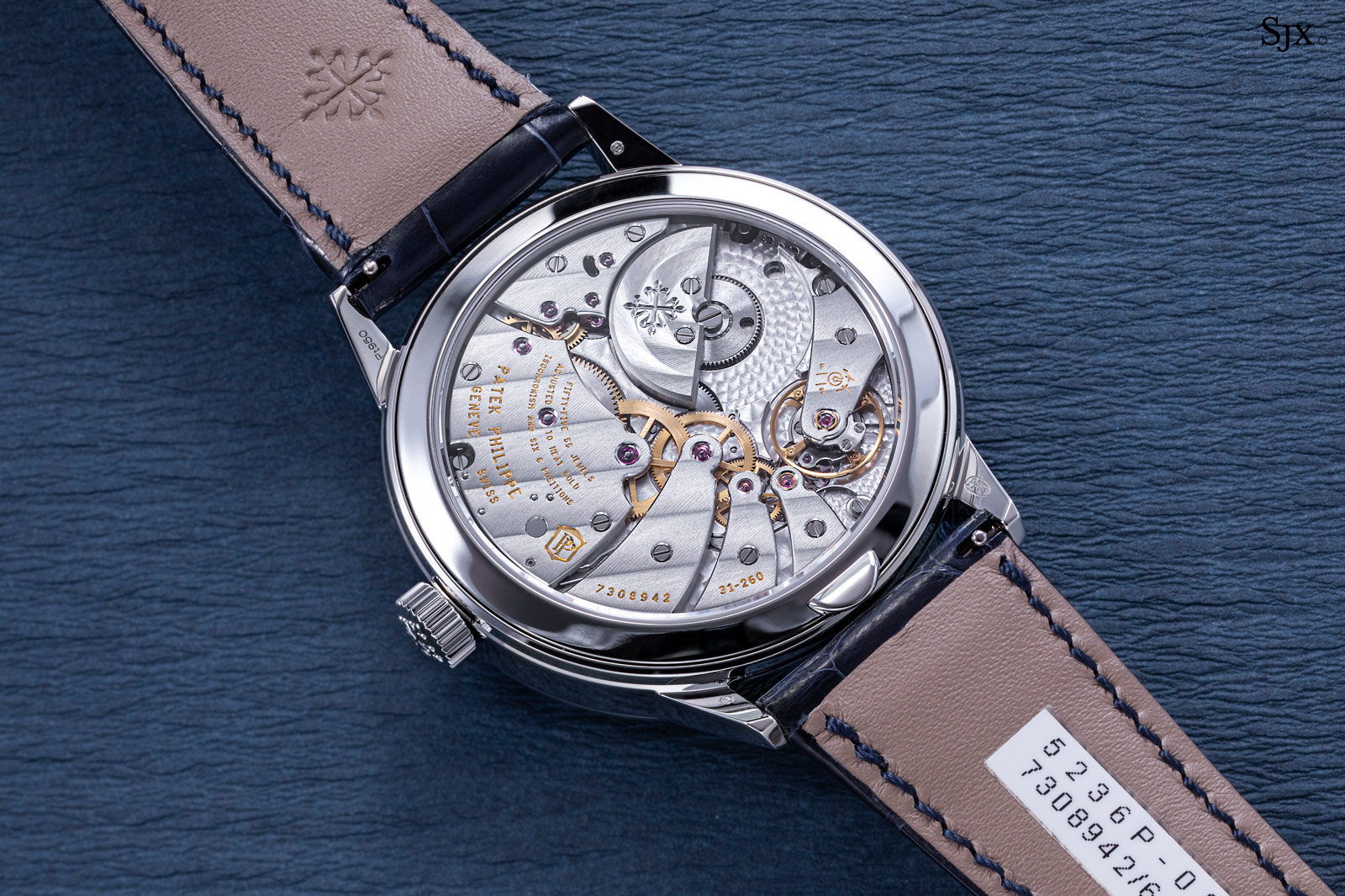
With a price tag of just over US$130,000, the ref. 5236P is significantly pricier than the brand’s more ordinary perpetual calendars (which are in gold, whereas this is platinum). The premium is easy to justify given the unique features of the ref. 5236P, namely the design, mechanism, and base movement.
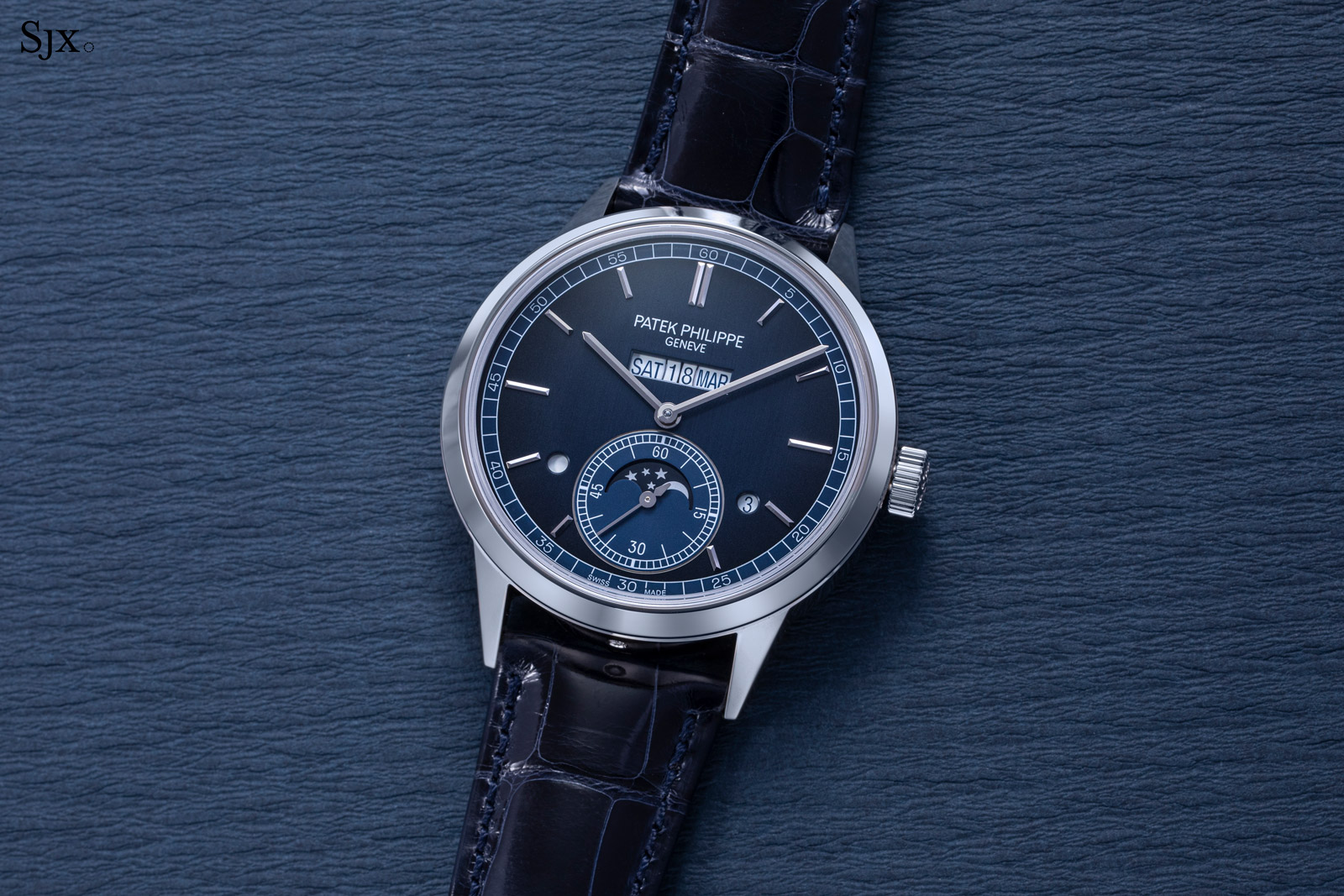
A historical design
The external styling of the ref. 5236P is similar to that of the ref. 5235, which was modelled on the refs. 3448 and 3450, both perpetual calendar models that shared the same unusual case design.
Featuring inclined lugs with unforgiving straight lines, matched with sloping bezel and relatively large diameter, the refs. 3448 and 3450 were occasionally nicknamed as “disco volante”, or “flying saucer”, after the shape of the case. These features were translated into the case of the ref. 5235, and now the ref. 5236P.
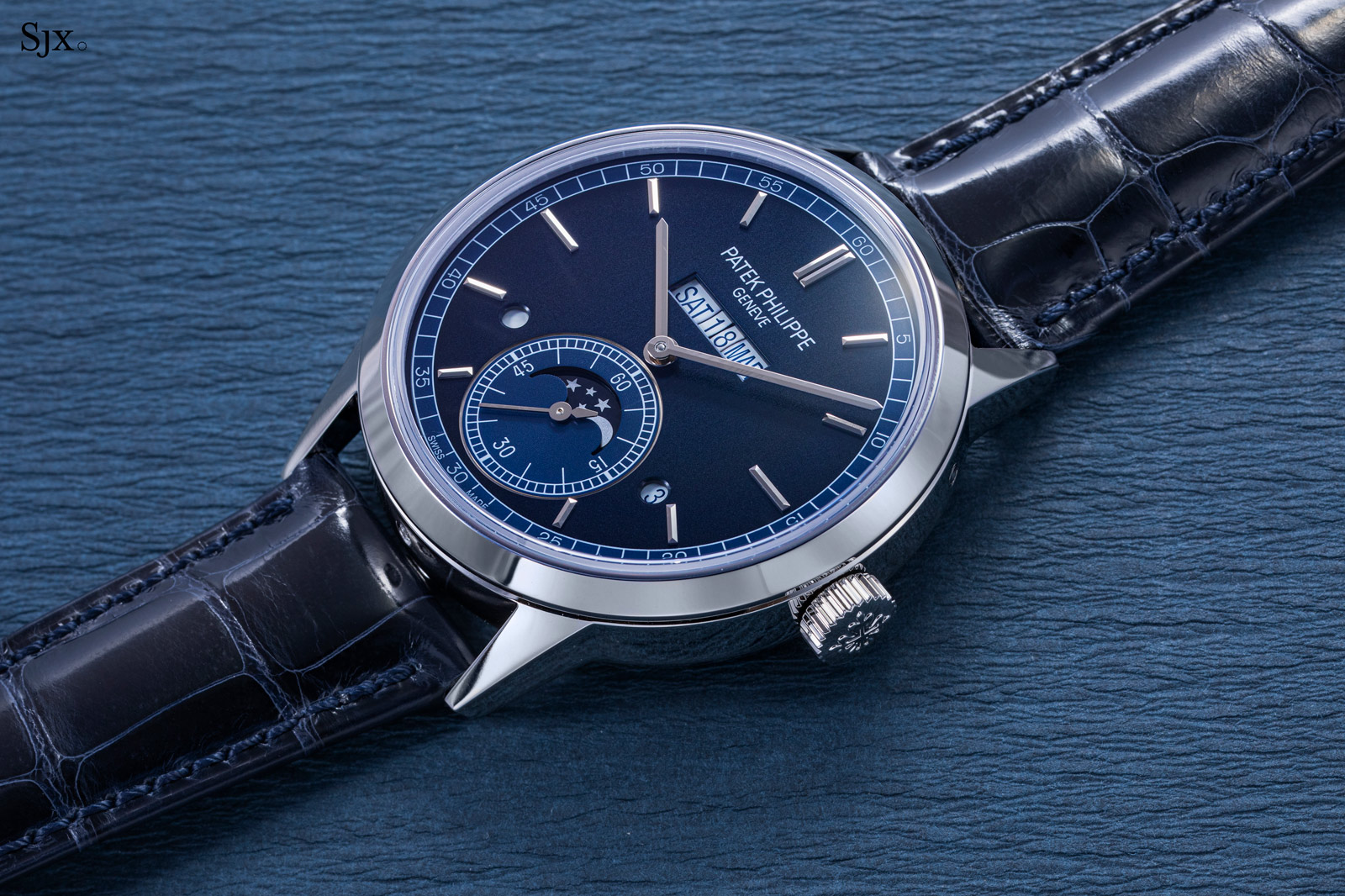
Although the ref. 5236P is inspired by a well-known vintage model, it is clearly a modern watch in form and size. It feels bigger and heftier than the average Patek Philippe perpetual calendar, a characteristic that is accentuated by the case design with its angular lugs and tall, sloped bezel.
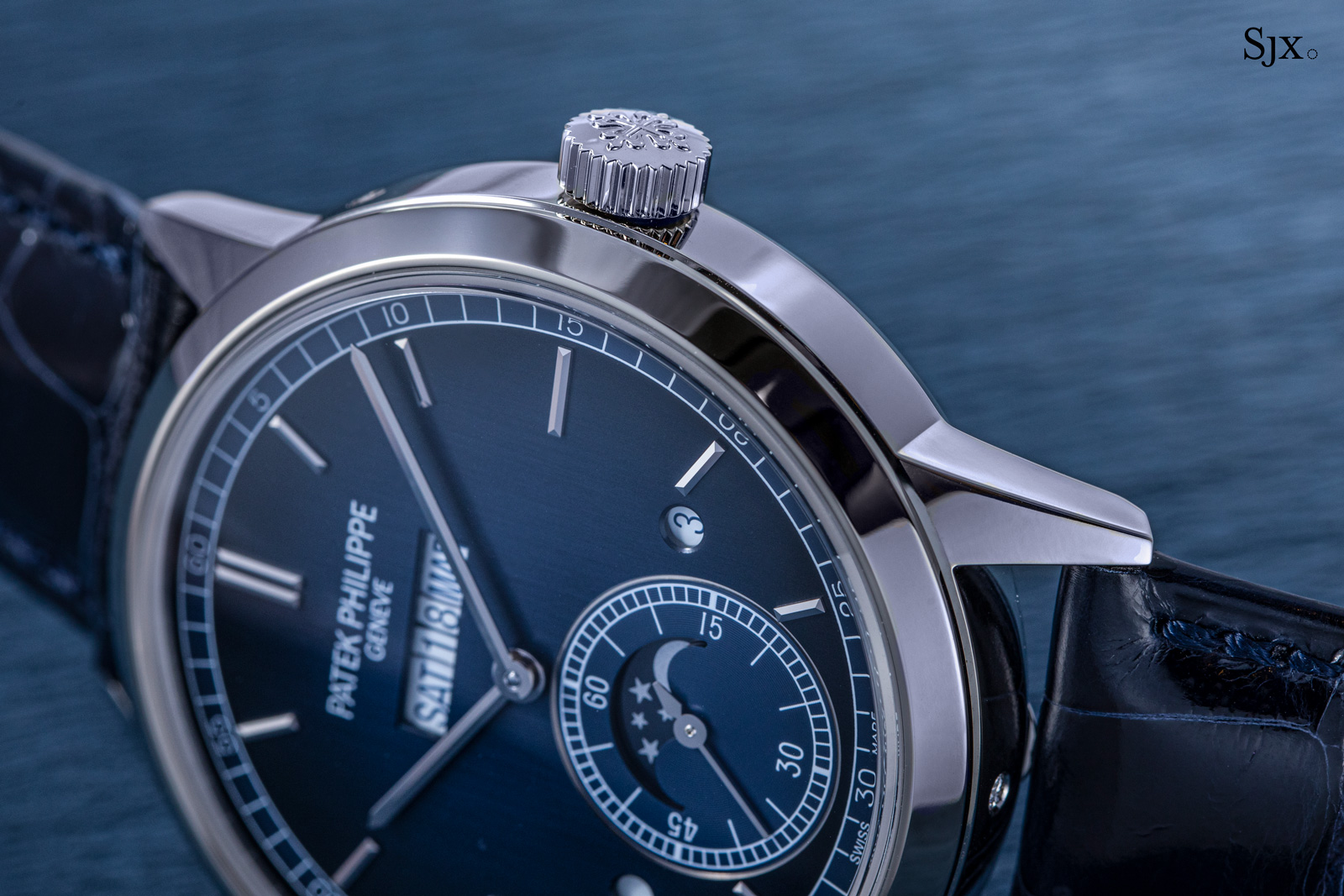
The lugs are instantly recognisable as coming from the refs. 3448 and 3450
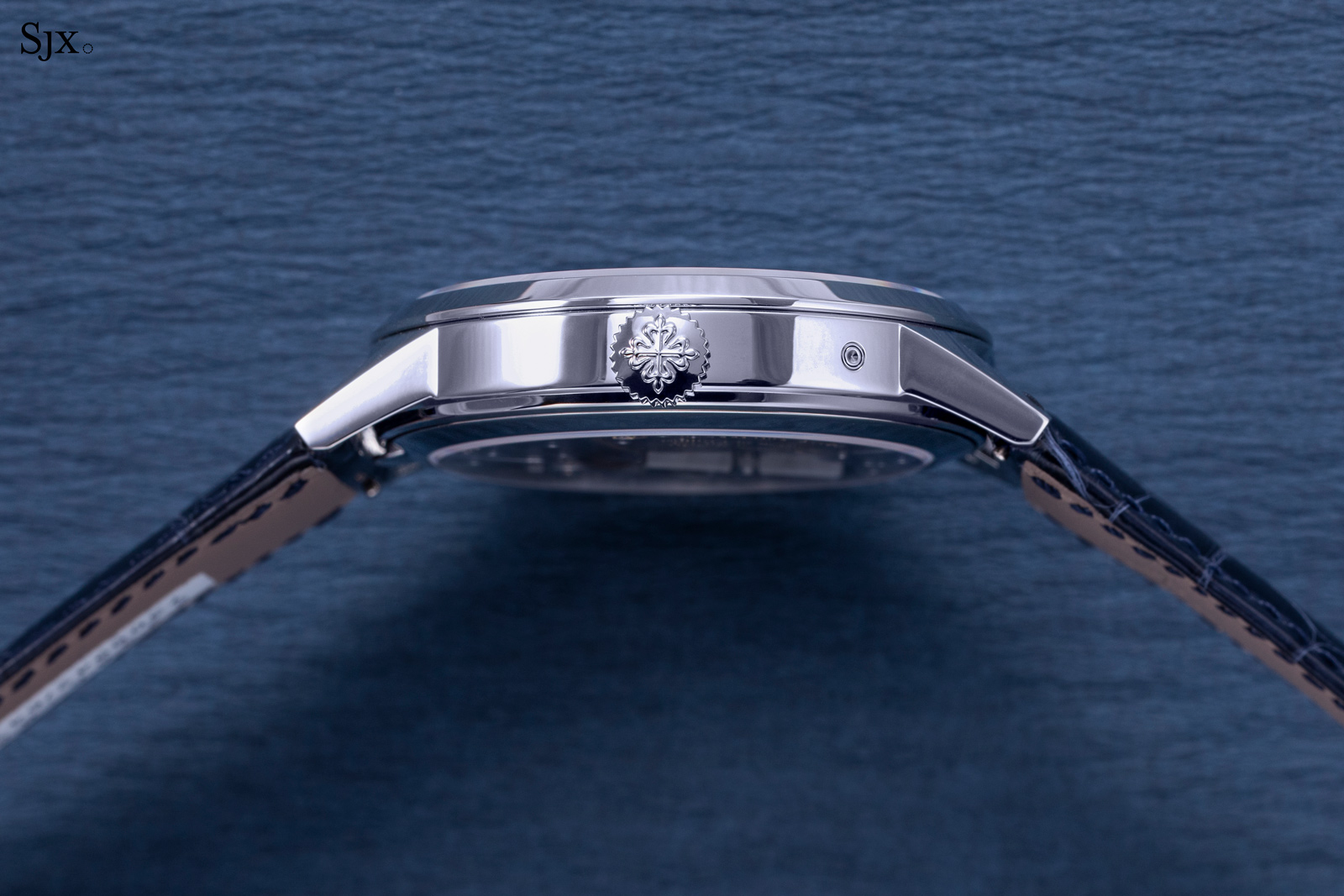
The case appears tall due to the flat back and wide case middle
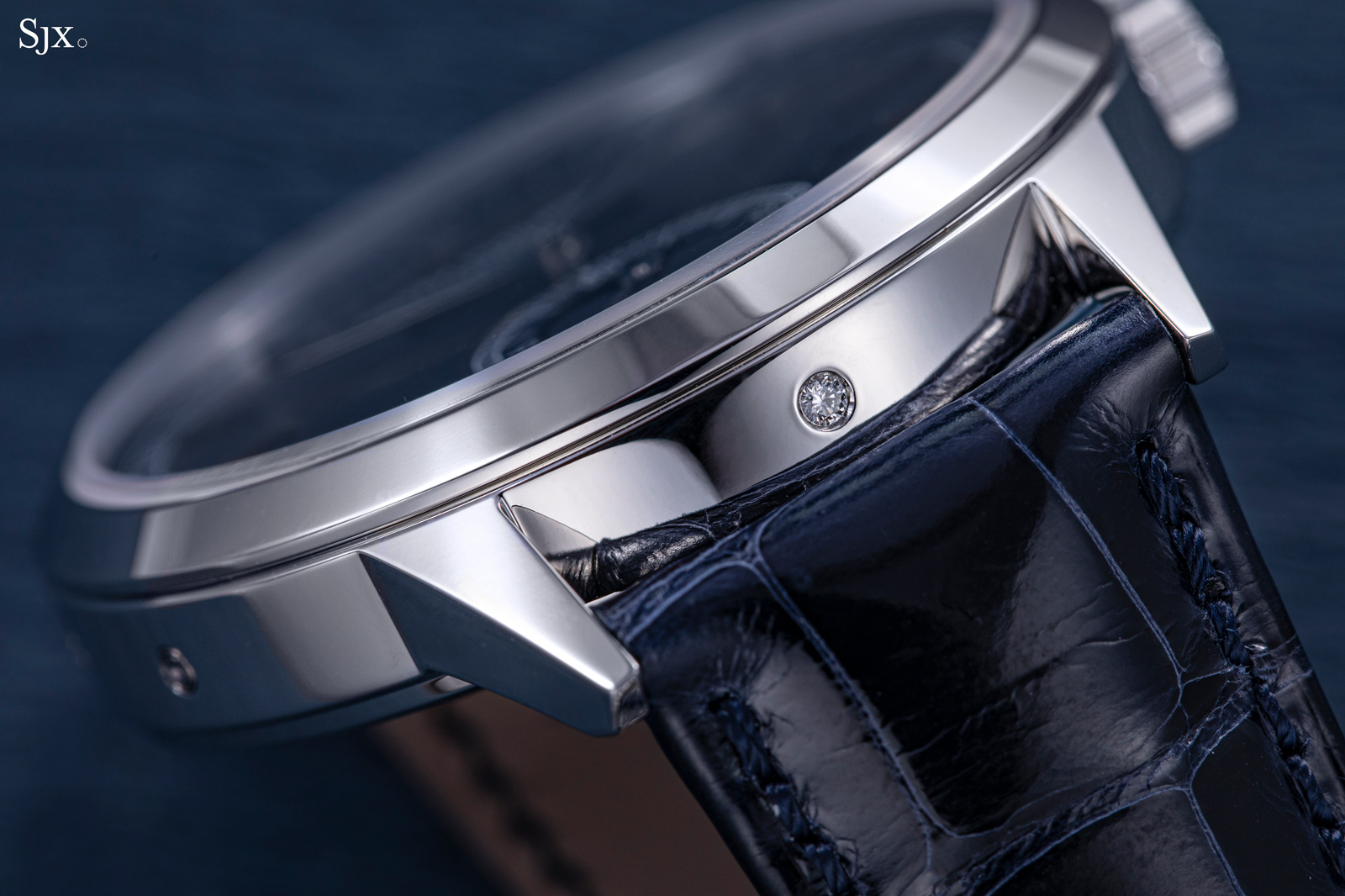
The diamond set between the lower lugs indicates the case is platinum
Like the case, the dial is vintage inspired, but it is more obviously a contemporary creation. The design is functional with minimal ornamentation, but still incorporates a few classical details like the font for the second and minute numerals.
Like the ref. 5235, the ref. 5236P has a dial with a pronounced vertical brushing. Here it is finished with a fashionable graduated effect that darkens towards the edges.
The dial is heavy on blue in various shades, which makes it ideal for anyone who likes the colour. I do and I think the dial is attractive.
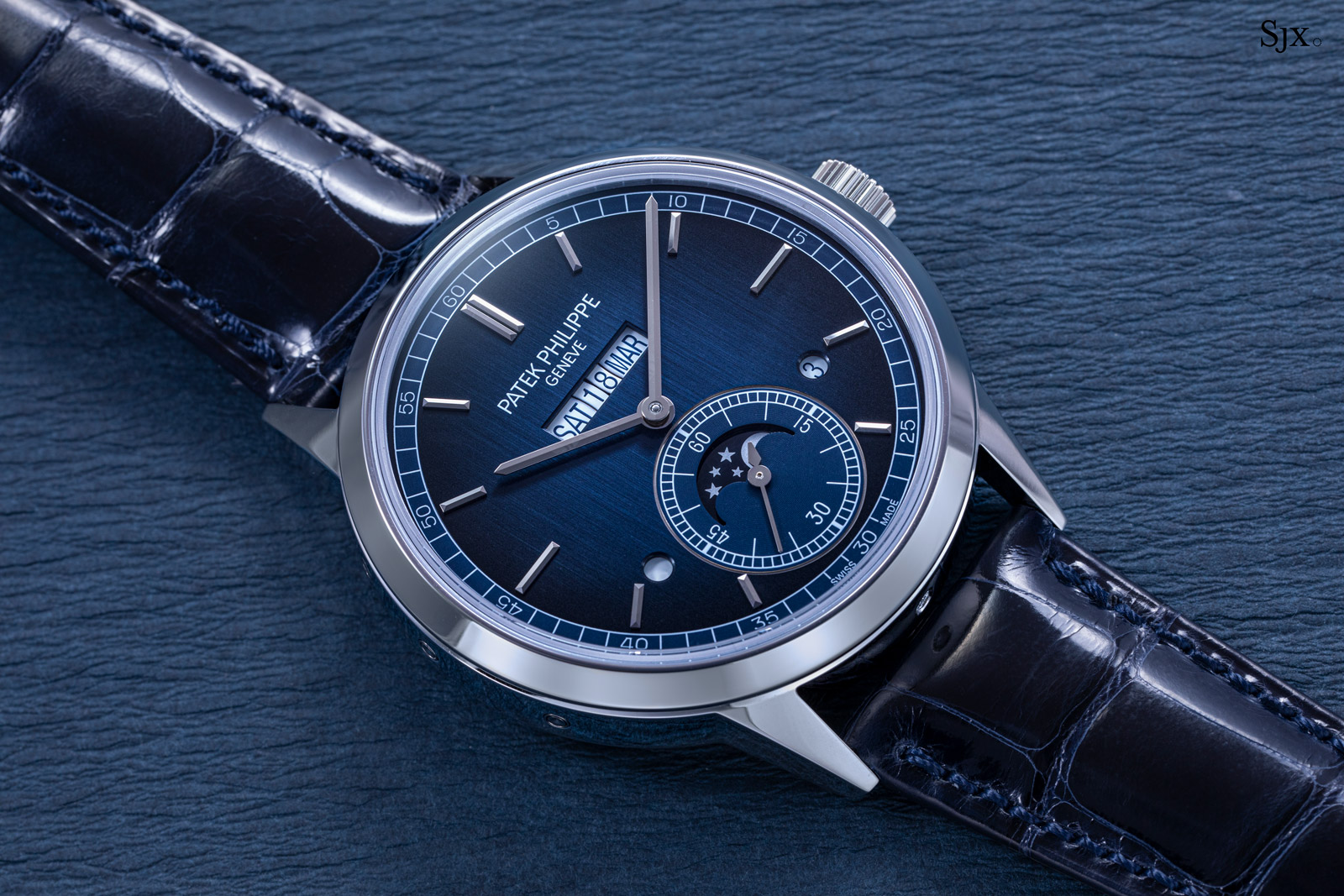
It has a pleasing horizontal symmetry and good vertical balance. Although the calendar indications sit tightly side by side below 12 o’clock, they are easily readable because of their size.
Notably, the linear calendar window is larger on the wristwatch dial than it was on the vintage pocket watches, in terms of relative proportions. And because the linear calendar window is so long, it leaves the Patek Philippe logo feeling smaller than usual, while in most of the brand’s watches the logo looks one size too wide.
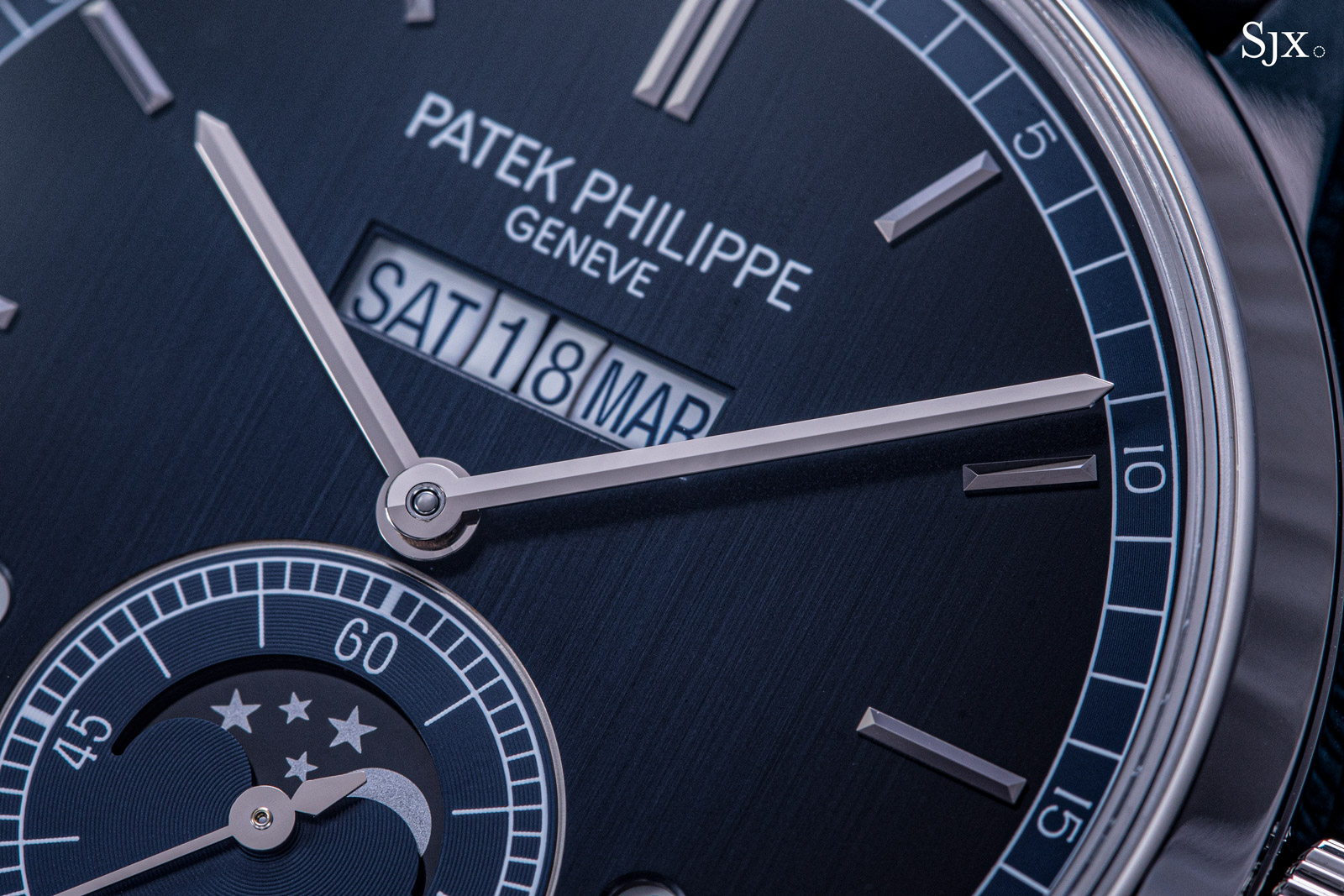
Perhaps the only nit to pick is the size of the moon phase, which seems slightly too small within the seconds register. That’s compounded by the seconds numerals and hashmarks, which leave the moon phase aperture looking like it came from a smaller watch.
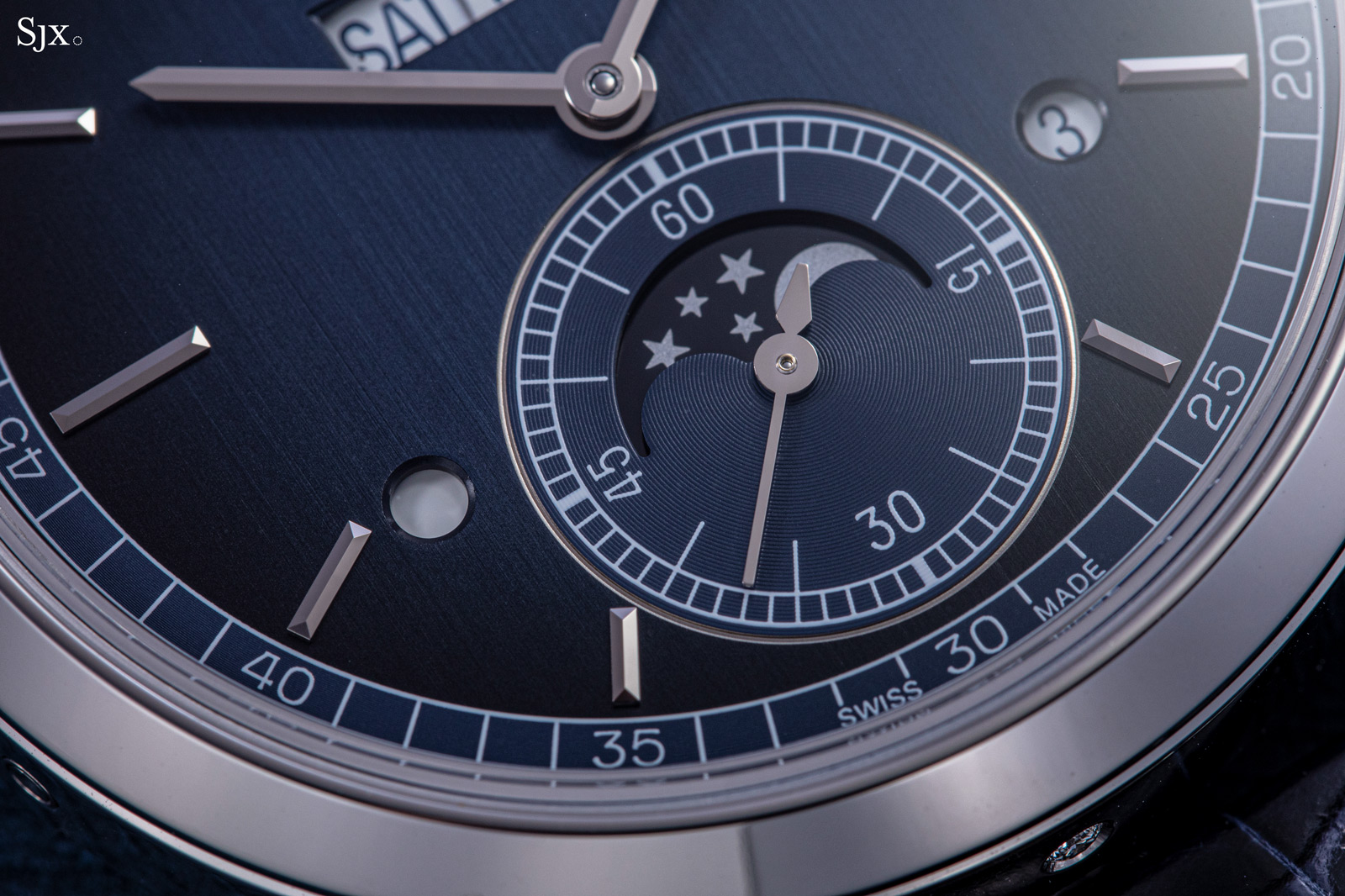
Linear display
The highlight of the ref. 5236P is the linear perpetual calendar that sits under the Patek Philippe logo at 12 o’clock. While the single window is a simple display on its face, the calendar is not merely repurposing an existing movement and relocating the display. Instead, a new perpetual module had to be built from scratch to accommodate the linear display.
Like the vintage pocket watches that inspired it, the ref. 5236P has the calendar display showing the day, date, and month, a sequence that also gave rise to the “American calendar” nickname for the pocket watches.
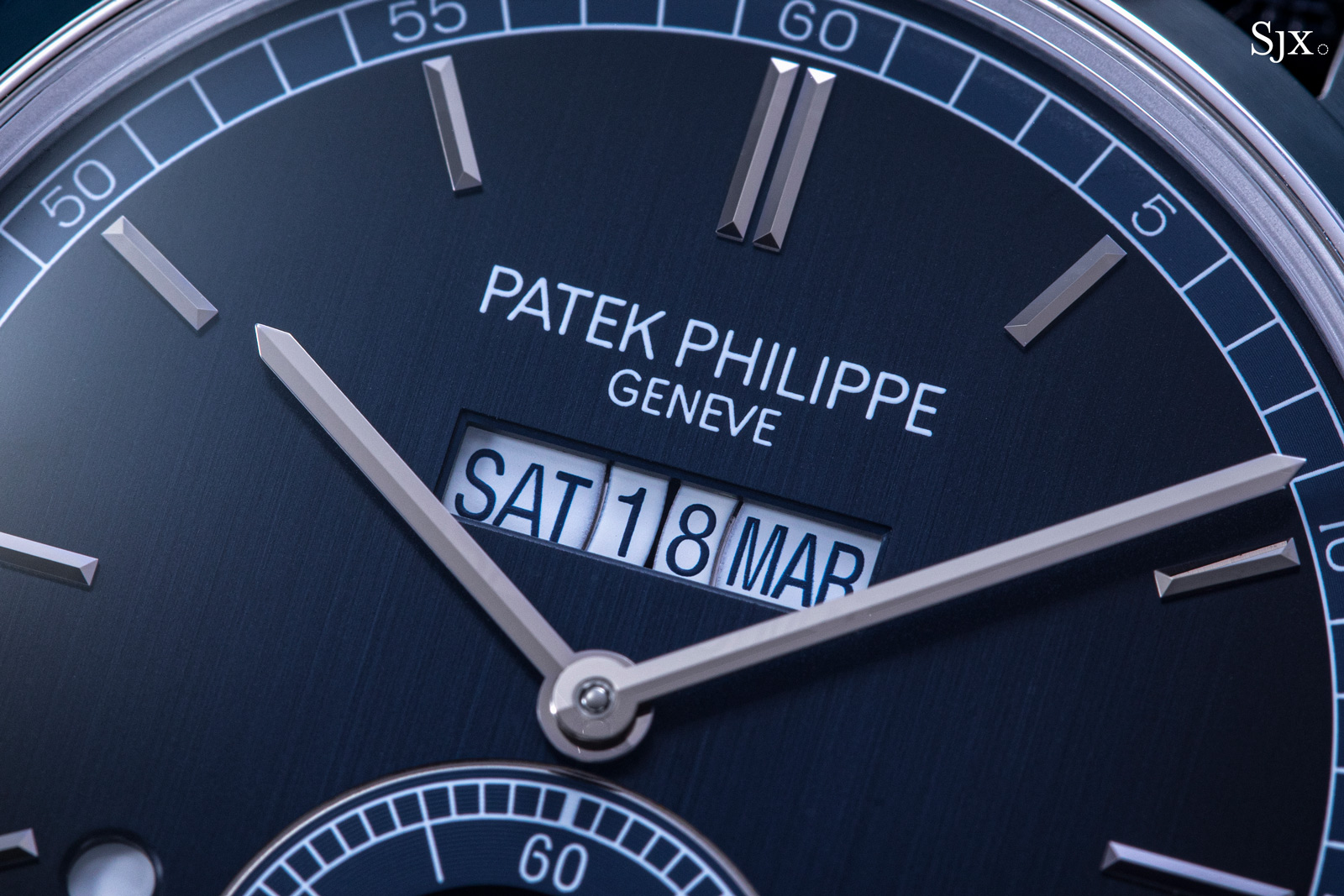
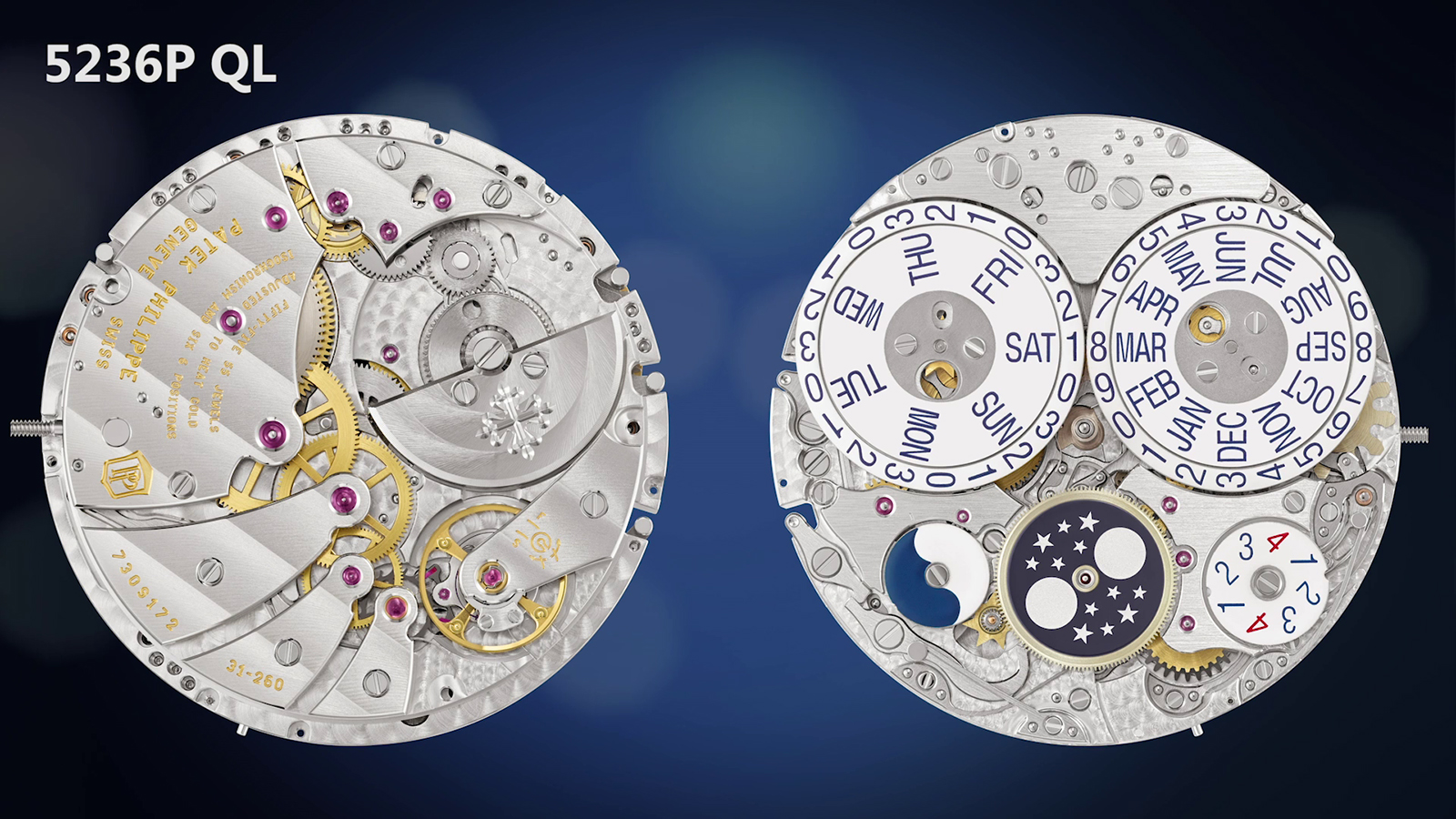
The back and under-dial view of the cal. 31-260 PS QL. Image – Patek Philippe
However, a direct adaptation of the pocket watch movement was not feasible for a wristwatch wristwatch, as it simply would not have fit. The pocket watch display features a large date disc with 31 digits, which would extend beyond the diameter of the case. And if the 31-digit disc were made small enough to fit a wristwatch case, its date digits would have been tiny and illegible.
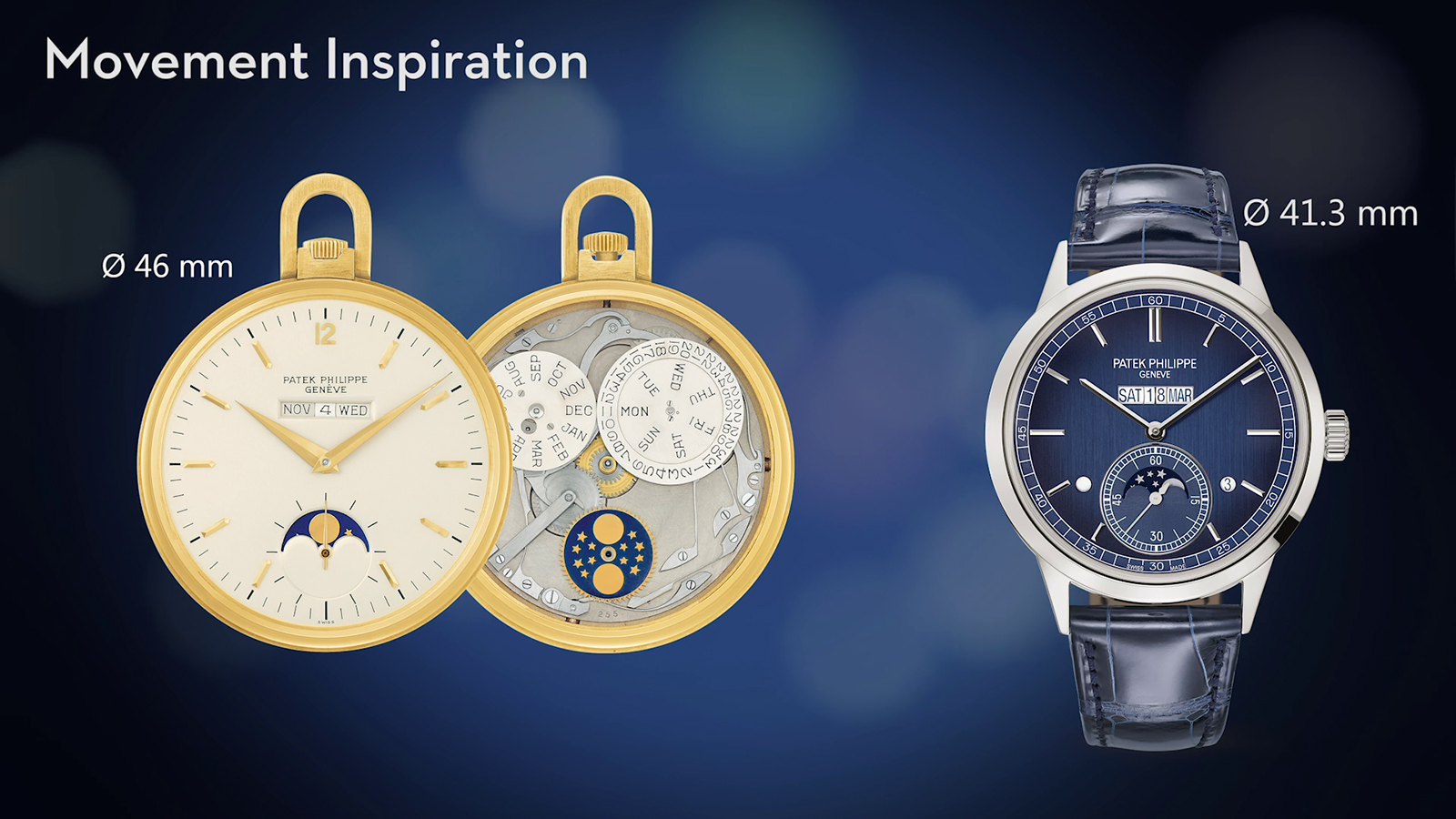
The ref. 725/4 pocket watch that inspired the ref. 5236P wristwatch. Image – Patek Philippe

The calendar display and its gears. Image – Patek Philippe
Thus, Patek Philippe opted for a “big date” instead, with two separate discs for the ones and tens digits of the date. To maintain consistency of the font size for both digits, the twin discs each carry twenty digits – the ones disc on the right repeats “0” to “9” twice, while the tens disc on the left repeats “0” to “3” five times.
The use of two large rings for the date leaves a wide expanse in the centre of each ring – ideal for discs showing the days of the week and month. These four discs which are symmetrically arranged, therefore form the core of the linear display.
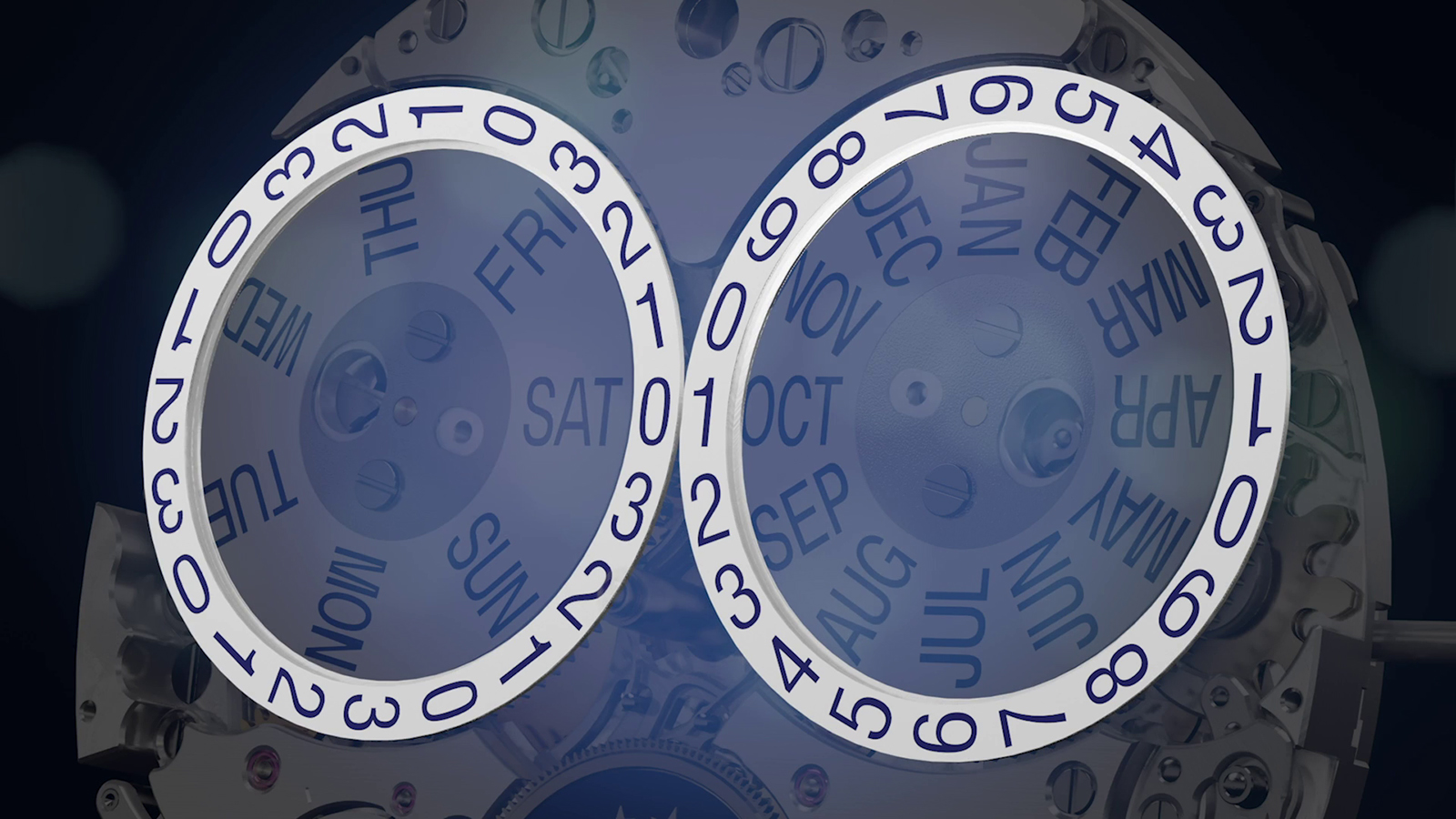
The four discs with the date discs highlighted. Image – Patek Philippe
Despite the initial complexity at a glance, the ref. 5236P is fundamentally a classical, non-instantaneous perpetual calendar that operates on the “grand lever” concept that underpins nearly all perpetual calendars.
The grand lever is the key component in classical perpetual calendars. It is pushed once every 24 hours, or once a day, and in turn actuates a 31-tooth date wheel. On longer months with 31 days, the grand lever will travel a shorter distance daily, and vice versa for shorter months. And the 31-tooth date wheel has a cam that allows it to “catch” the grand lever’s pawl at the end of each month, allowing it to skip to the first of the subsequent month.
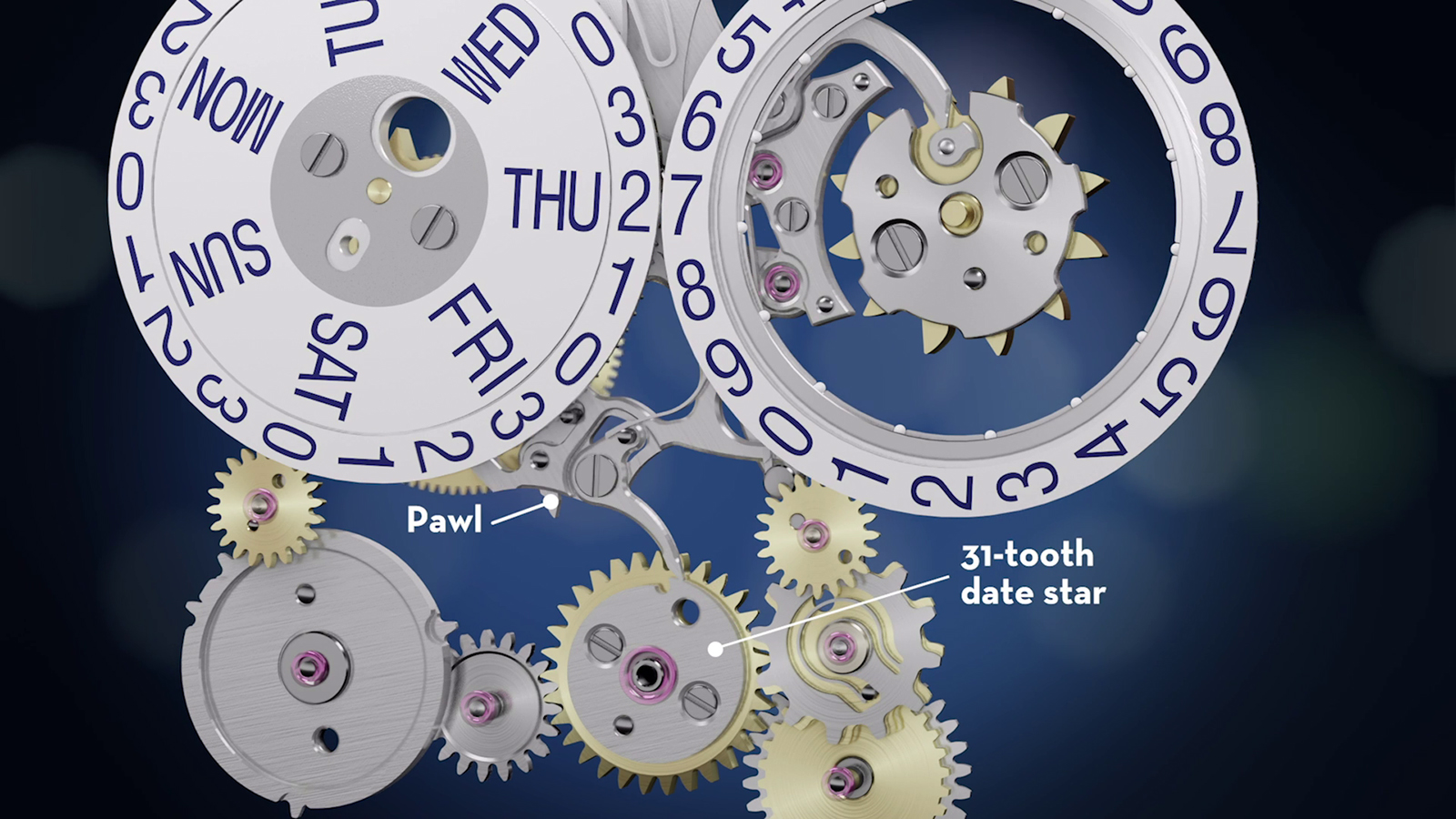
The calendar mechanism showing the 31-tooth date star. Image – Patek Philippe
The 5236P locates the 31-tooth date wheel at six o’clock, co-axial and under the moon phase and sub-seconds. Technically, a date hand can be mounted onto this 31-tooth wheel to display the date on the seconds register much like most perpetual calendars. But of course, that misses the point of the ref. 5236P. Instead the 31-tooth wheel is redirected to drive the linear display above at 12 o’clock.
This redirection is where majority of the work was done when designing the movement. Since there’s a cluster of calendar discs on the top half, the movement layout had to be thoughtfully considered to ensure none of the parts ran into each other.
Display mechanism patents
The thoughtful consideration is found in one of the patents Patek Philippe filed specifically for this movement – European patent EP3786723A1 for the mechanism that drives the four discs of the linear display.
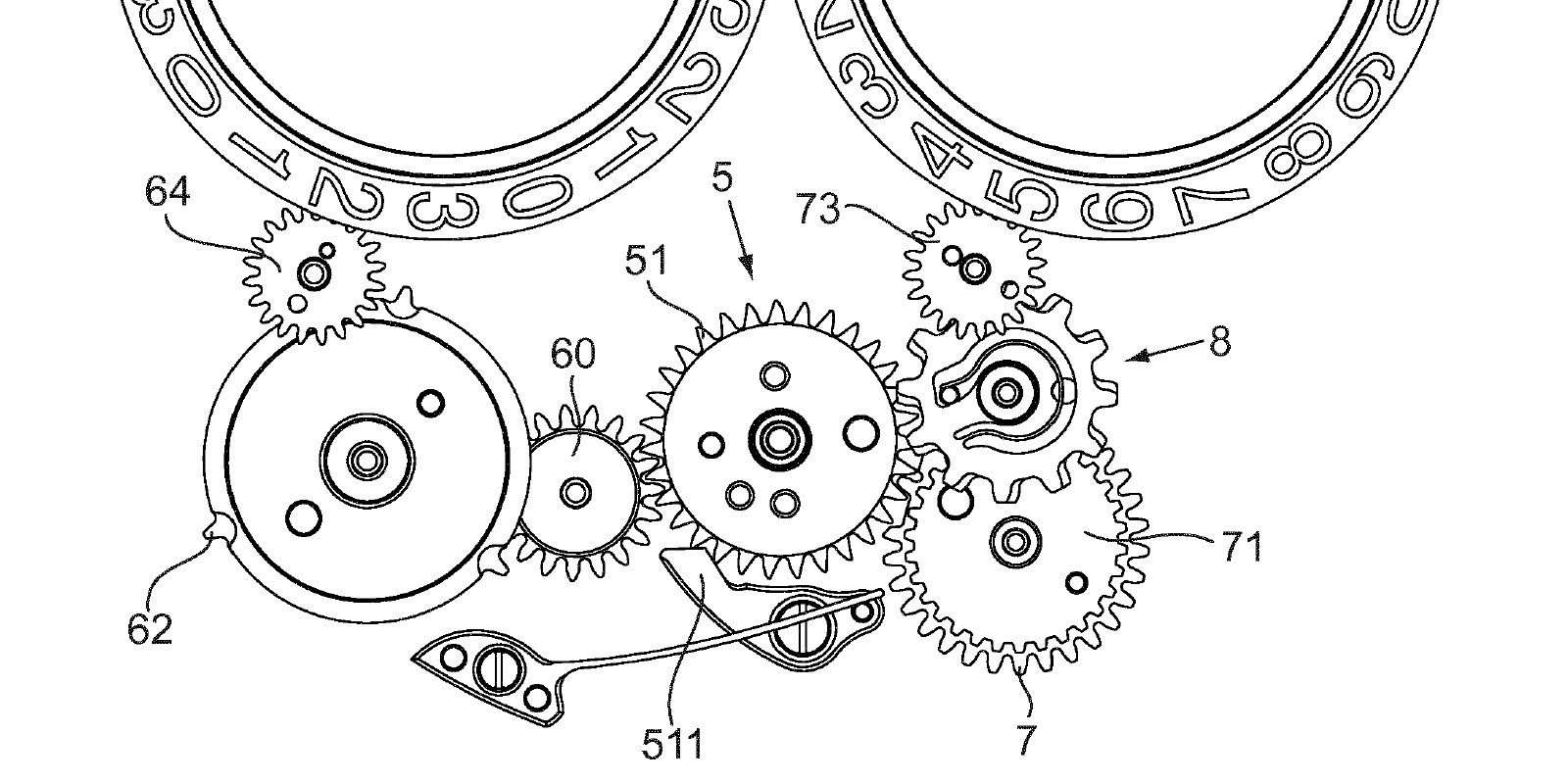
The technical diagram of EP3786723A1. Source – Patent filing
Specifically, the patent describes in detail how the gear train splits into two for the ones and tens digit of the date – somewhat like a convoluted big date mechanism. In the diagram above, the 31-tooth wheel is visible as (51), and drives two trains – one on the left for the tens, and another on the right for the ones.
The patent is also focused on the interaction of the 31-tooth wheel driving the wheel of the ones digit. Certain teeth of the wheels have a specific geometry with truncated tips, which serves two purposes. First, it ensures the ones digit does not change at the end of the month; in other words, the “1” in “31” remains stationary and only the “3” is replaced by a “0”. Second, it cushions the large discs against prevents inertial shocks that may drive the 31-tooth wheel in reverse.
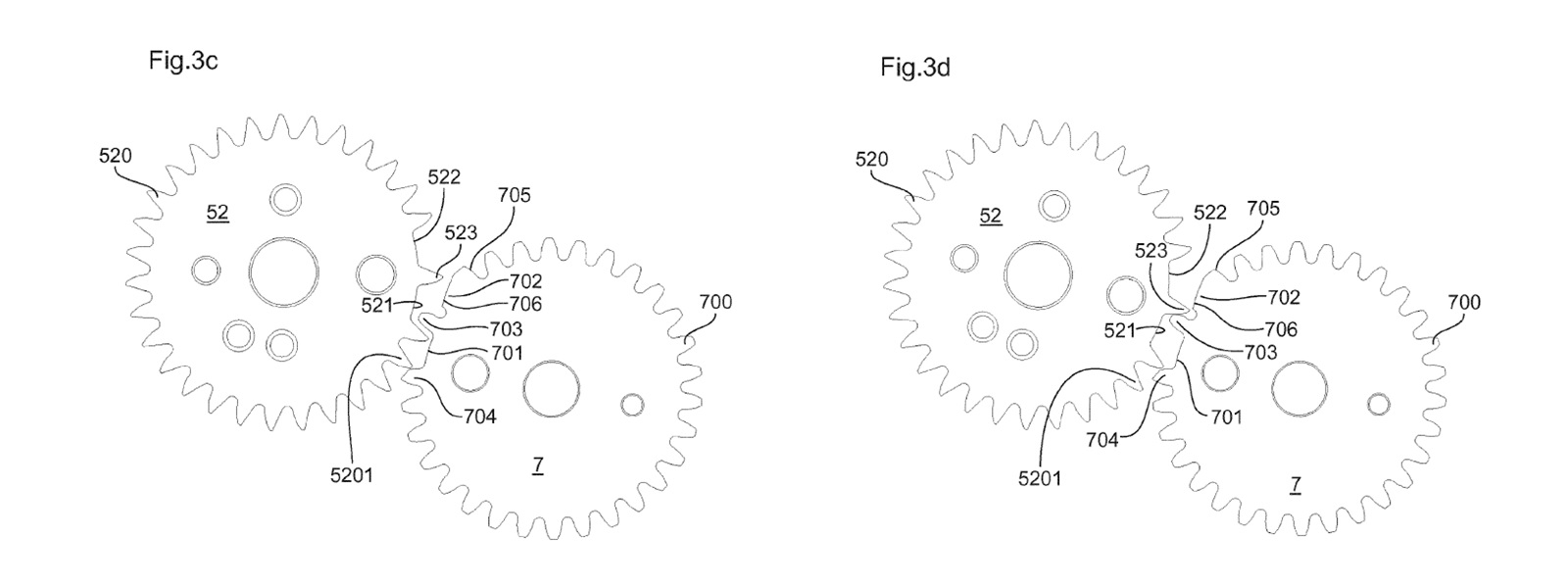
Fig.3c indicates the 31st of the month, while Fig.3d indicates the 1st of the following month. The truncated teeth ensure the correct display of the ones digit and also act as a safety from being driven in reverse. Source – Patent filing
On a related note, another patent, EP3786724A1, was filed for an additional mechanism that also addresses this issue. There is an intermediate wheel between the 31-tooth wheel and the ones digit disc, which has two layers of teeth. The two layers are spring-loaded, thus filling the gaps between the meshing of adjacent gear teeth.
This serves two purposes, with the first being most obvious: to minimise play between the gears, which allows for a more precise positional rotation of the gears. However, this is less of an issue in this construction, as the date discs precisely jump from one numeral to the next, thanks to a jumper spring.
The second purpose of the sprung gear is more important. Like the truncated teeth of the 31-tooth wheel, this also acts as a safety that blocks the mechanism the case of shock, which may cause the large date discs to drive the mechanism backwards. The spring-loaded wheels can absorb such shocks and thus protect the delicate mechanisms on their reverse.

The sprung wheel, here labelled “self-blocking wheel”. Image – Patek Philippe
Meanwhile, the tens digit disc is driven by a fairly conventional big date mechanism. It has an intermediate wheel with four precise teeth on it, which flips the tens digit four times in a month (on the midnight after the ninth, 19th, 29th, and 31st of the month).

The wheel for the tens disc. Image – Patek Philippe
This intermediate wheel in turn drives a Maltese cross that mechanically blocks the disc outside of the prescribed switching periods. This prevents unwanted accidental change of the digit disc due to shock.

The tens wheel with the Maltese cross. Image – Patek Philippe
A third patent, WO2021038396A1, was filed for the configuration of the co-planar discs of the calendar display. Coaxially within the ones and tens digits are the week day and the month indicator discs. The patent covers the fact that these discs all sit on the same plane, and support each other with the use of ball bearing races.

A exploded view of the co-planar discs. Image – Patek Philippe
Notably, the movement has two fixed rings that supports the four discs. The inner portion of the ring supports the ball bearings for the day and month discs, while the outer circumference of the disc holds the ball bearings for ones and tens date discs. It is a compact setup that is thin, while preserving robustness.
Typical of Patek Philippe perpetual calendars, the month display is directly driven by the perpetual calendar code wheel, a 12-toothed wheel mounted to a cam of different height profiles that encodes the number of days in each of the 12 months. While this is typically done with a 48-toothed wheel for the full leap year cycle of four years, Patek Philippe instead uses a pivoting satellite system that accounts for the shorter month of February in a leap year, which requires a deeper slot in the cam.
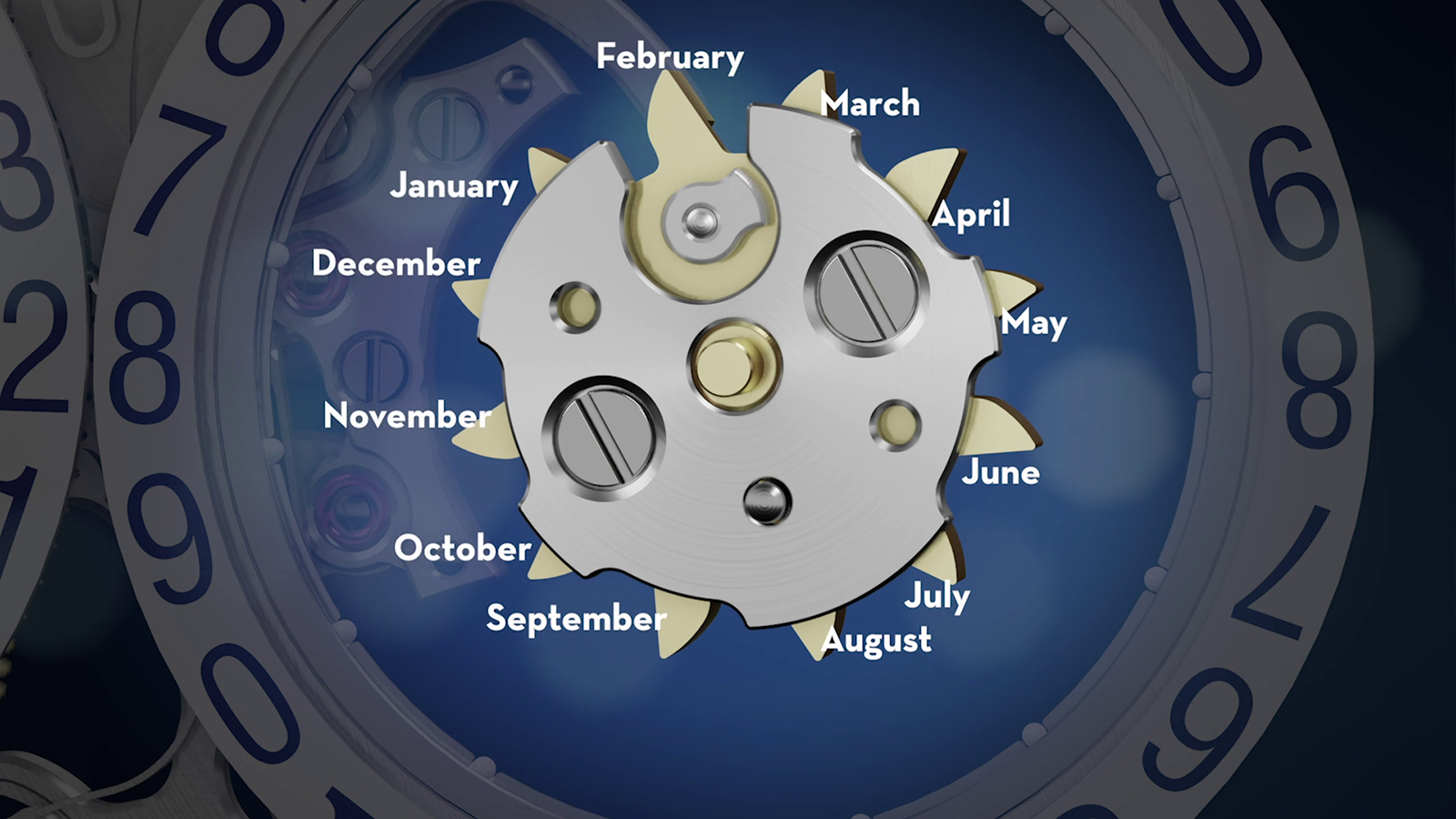
The perpetual calendar code wheel. Image – Patek Philippe
In summary, the perpetual calendar mechanism of the ref. 5236P is eminently traditional, but the display has been cleverly remained for the linear calendar in large format. And the reimagining has been done in an elegant fashion typical of Patek Philippe, with slim and subtle innovations that still maintain mechanical robustness.
That said, the traditional, “grand lever” mechanism still has its drawbacks which are common to most other Patek Philippe perpetual calendars. The most apparent inconvenience is the need for various pushers to adjust each indications of the calendar, in contrast to several modern perpetual calendars that have simpler interfaces of a single pusher or crown adjustment for simultaneous correction of all displays.
But it has to be remembered that all of Patek Philippe’s calendar watches are self winding for a reason – they can be stored on a winder which eliminates the need to adjust the calendar. In that context, the pusher adjustment is not necessarily a drawback.
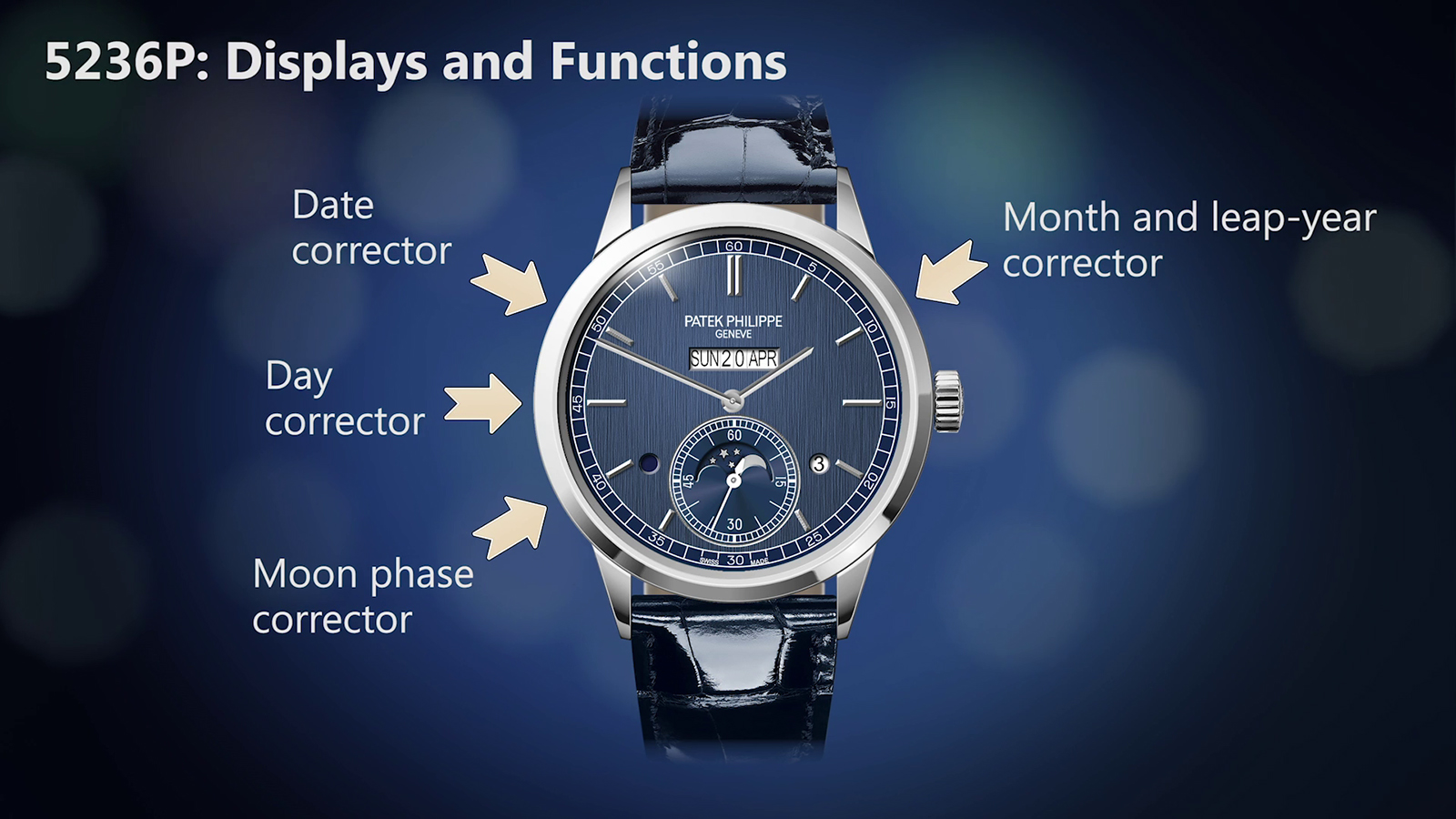
Adjusting the calendar is still a tedious exercise with four pushers to operate. Image – Patek Philippe
The other criticism is the nature of the calendar’s switchover. It is a “dragging” display that changes gradually over several hours around midnight, instead of being an instantaneous calendar.
Since the movement was designed from the ground up, a crisply jumping display would have been a huge bonus that would elevate the already clever design to another plane.
Still, the omission of the instantaneous function is understandable. It might have been infeasible due to the higher energy requirement of an instantaneous display, which cannot be served by this base movement.
An almost familiar base movement
While most of the perpetual calendar mechanism is hidden under the dial, the base movement is still visible through the display back.
Entirely new in most respects, cal. 31-260 PS QL is made up of the perpetual calendar module installed on a base movement that is currently unique to the ref. 5236P, but draws clear inspiration from its cousin, the ref. 5235 that contains the cal. 31‑260 REG QA.
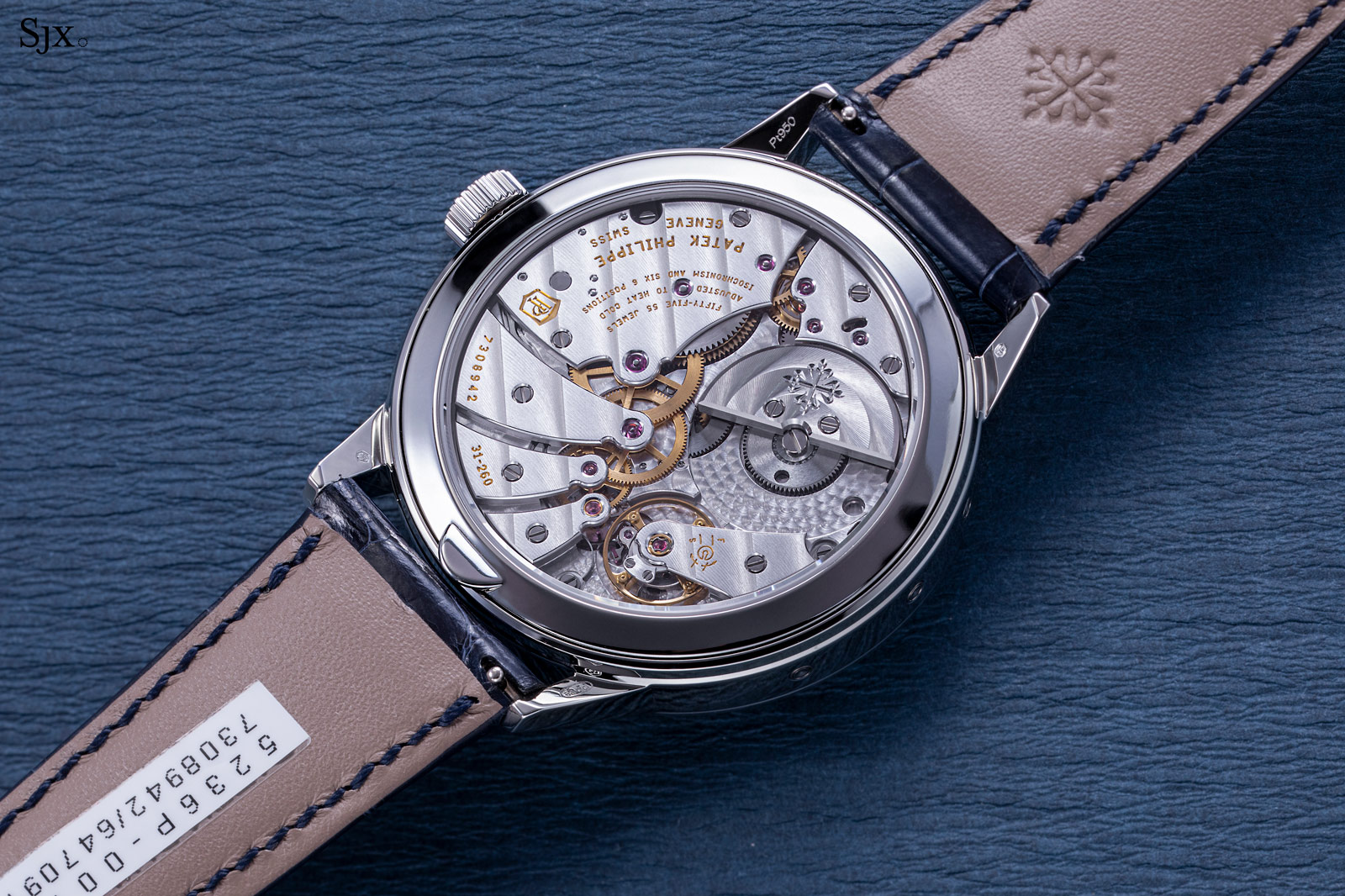
The cal. 31-260 PS QL
The base movement is architecturally simple – it is a micro-rotor movement with a single barrel. In broad strokes it is similar to the movement in the ref. 5235. However, it does have several relatively subtle technical improvements, as would be expected since a decade has passed since the ref. 5235 was launched (and the fact that the ref. 5236P is a far more expensive watch).
The first is obvious – the bridges are of a different design. The movement sports individual finger bridges for the going train, compared to the wide bridges used in the ref. 5235.
Also, the movement diameter has increased from 33 mm to 34 mm, though that is a consequence of the wider calendar module, rather than an expansion of the base calibre.
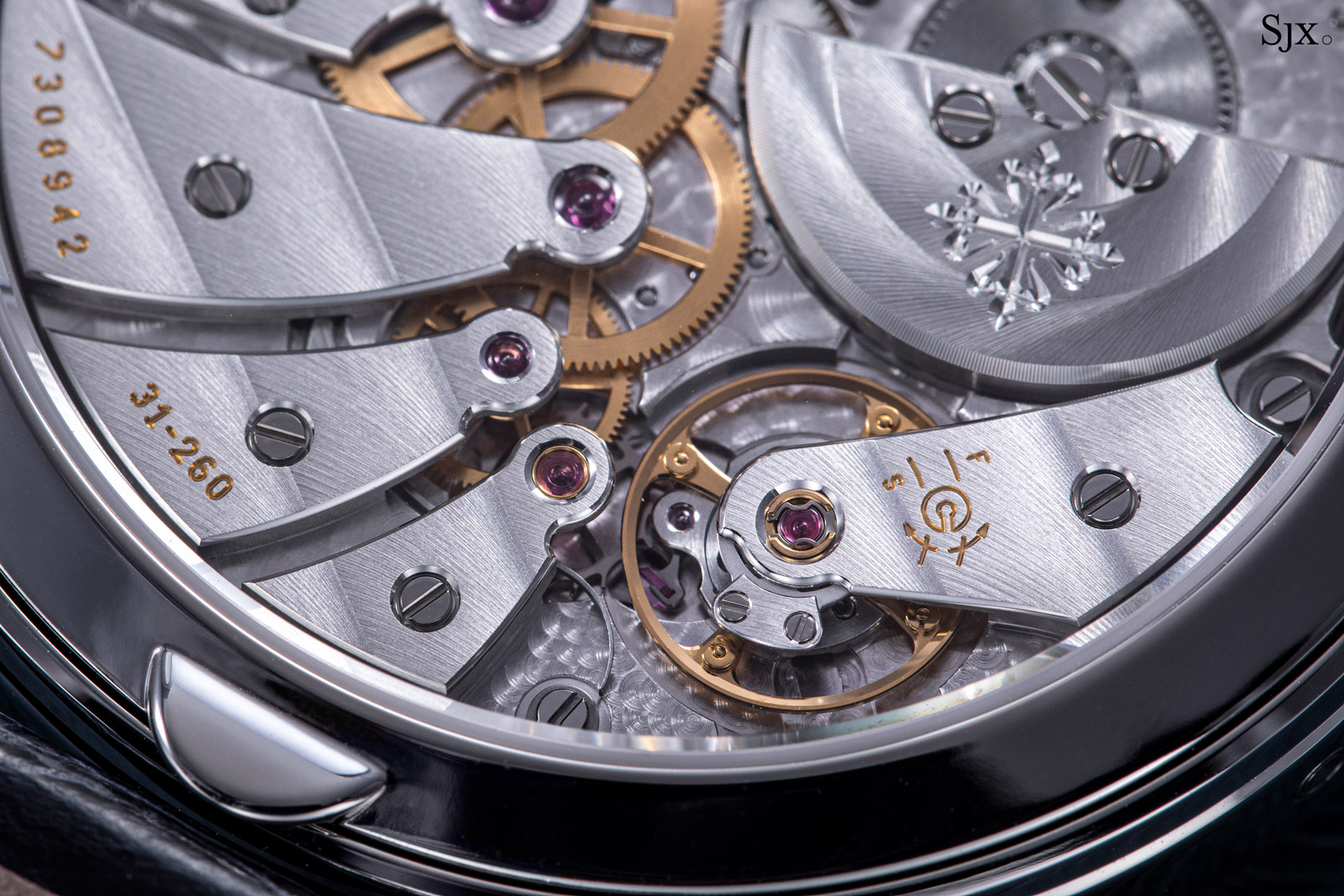
The finger bridges on the left, and the balance cock at bottom right
The mainspring barrel was also upgraded – it now boasts a 20% more torque, which is a welcome extra since the perpetual calendar requires more energy than an annual calendar. Consequently, the going train wheels have visibly wider wheel rims to transit the increased energy.
The upgraded barrel also requires more energy to wind, so a weightier platinum micro-rotor replaces the 22k gold rotor of the ref. 5235. Being denser than gold, platinum increases the rate and efficiency of winding.
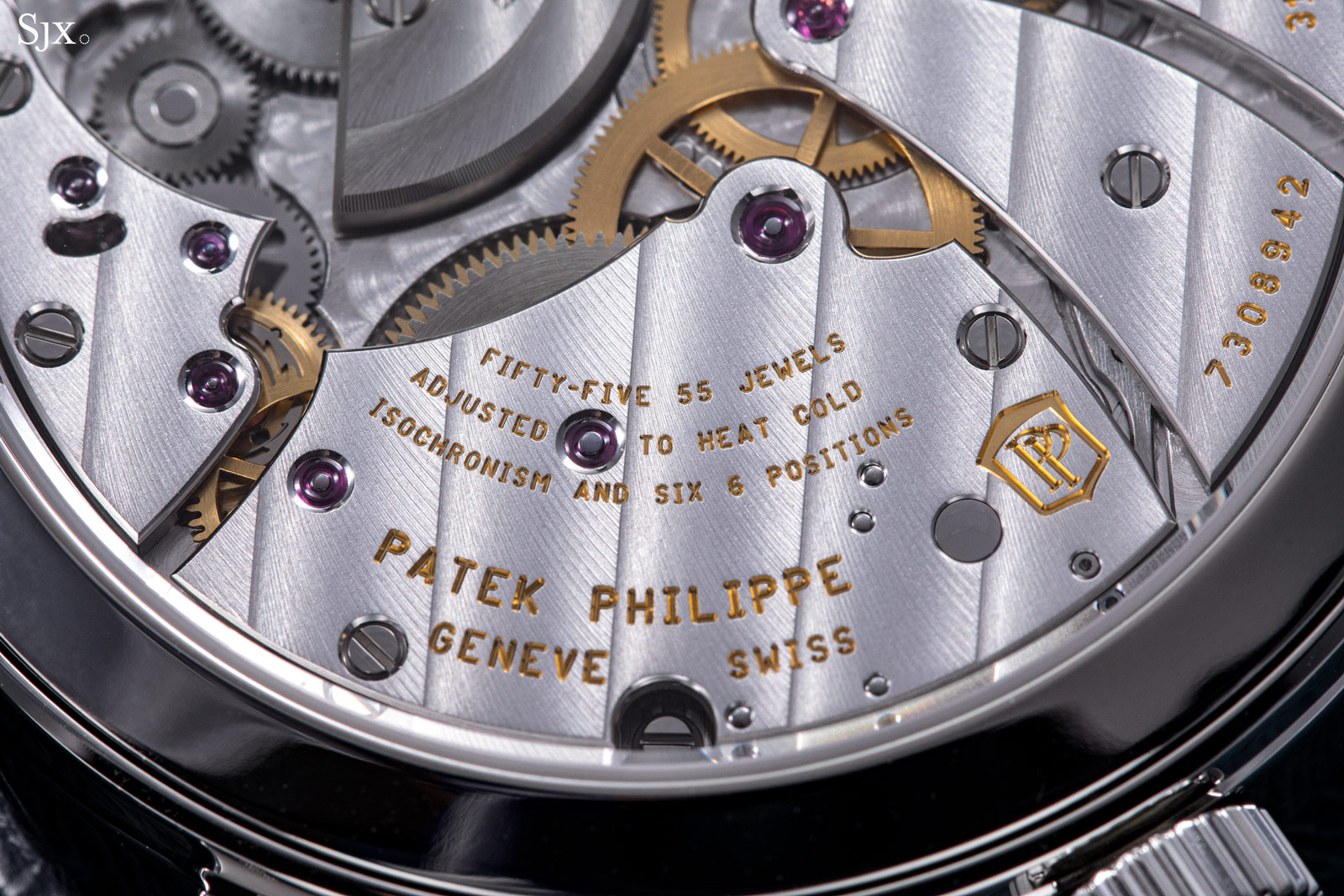
The barrel bridge with the wide-rimmed going train wheels visible just above
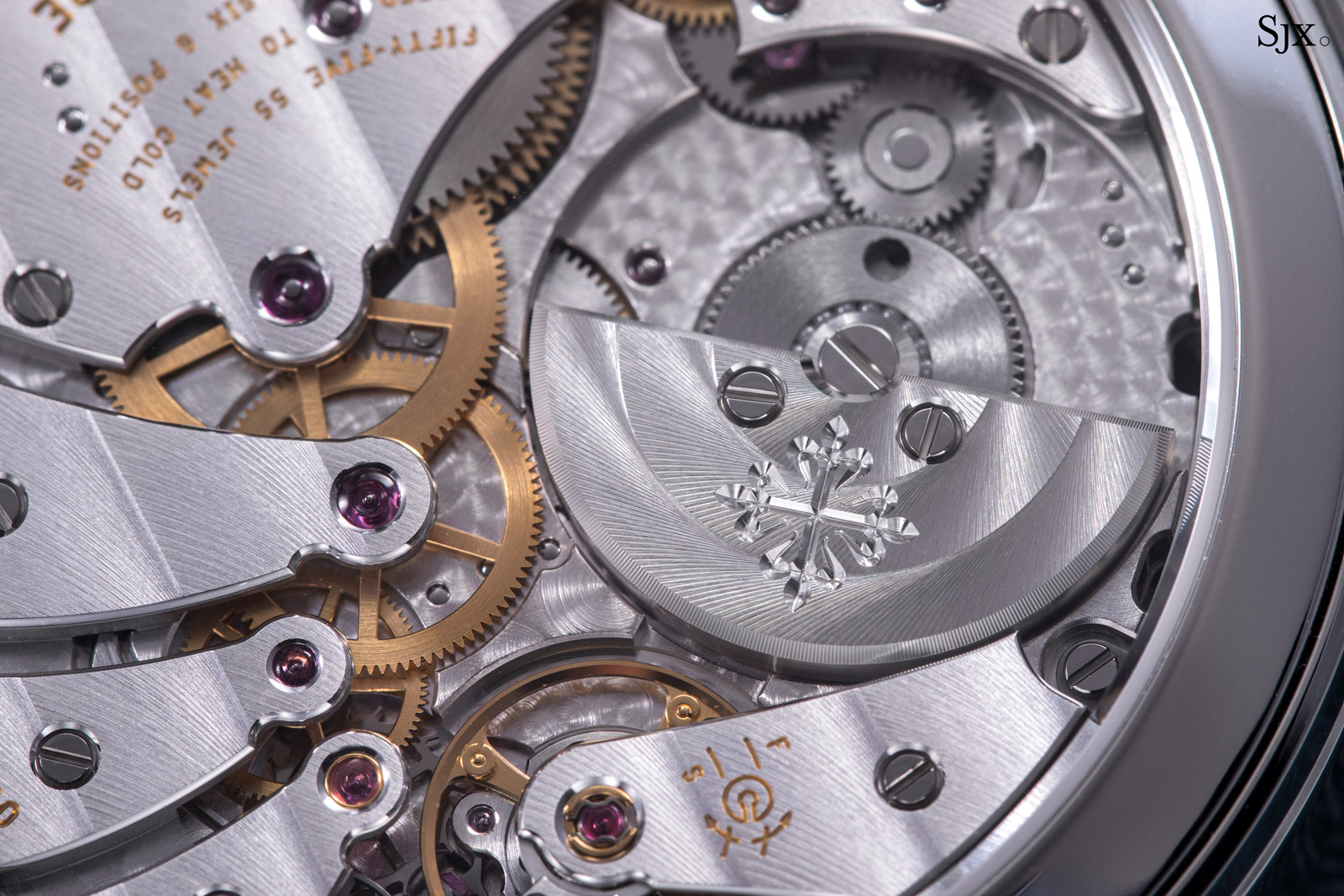
The increased torque was also necessary to drive the upgraded escapement – while the ref. 5235 had a balance wheel running at an unusual 3.2 Hz, or 23,040 beats per hour, the ref. 5236P beats at a higher rate of 4 Hz, or 28,000 beats per hour, which improves timekeeping stability.
One under-appreciated feature of the escapement is its balance spring. Instead of a conventional metal-alloy hairspring with an overcoil that is common in high-end movements, both the refs. 5235 and 5236P feature a hairspring made of Silinvar, which is silicon with an oxide outer layer. The material offers multiple benefits for a hairspring – it is antimagnetic, resistant to temperature changes, and is resilient to accidental deformation.
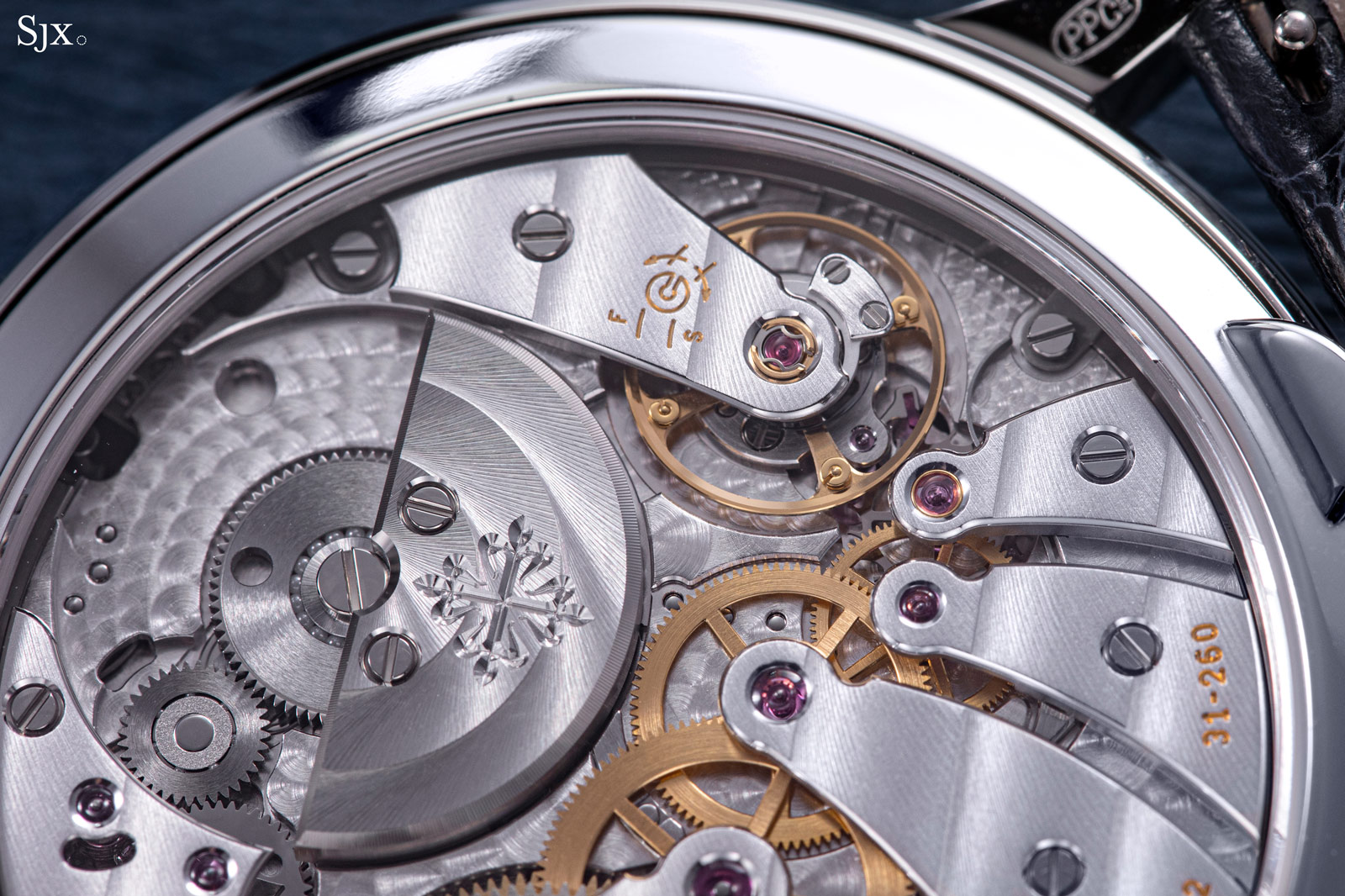
Silicon hairsprings can also be formed into complex shapes, which allows optimisation of hairspring’s thickness along its length. This allows for a more concentric breathing of the hairspring, which improves isochronism. While this is typically achieved with an overcoil on alloy hairsprings – which requires additional height since the hairspring has two levels – the same can also be achieved with a flat silicon hairspring, which in turn means a thinner escapement and thus, a thinner movement.
It is also worth mentioning that the movement features hacking seconds – a function relatively uncommon on Patek Philippe movements, but is becoming more common with recent models. This is a step in the right direction, as it allows for easier time setting.
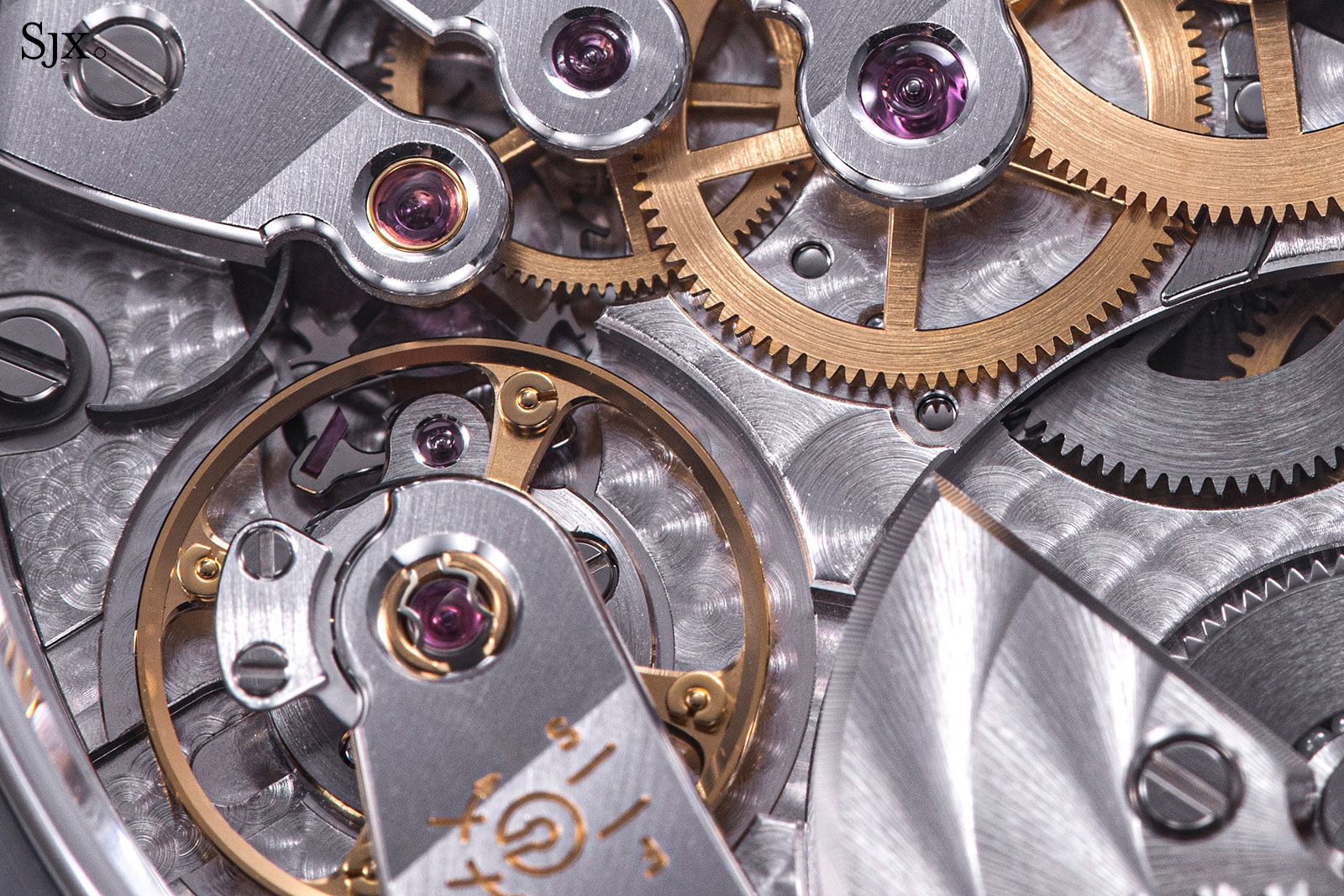
The curved hacking lever is visible to the top left of the balance
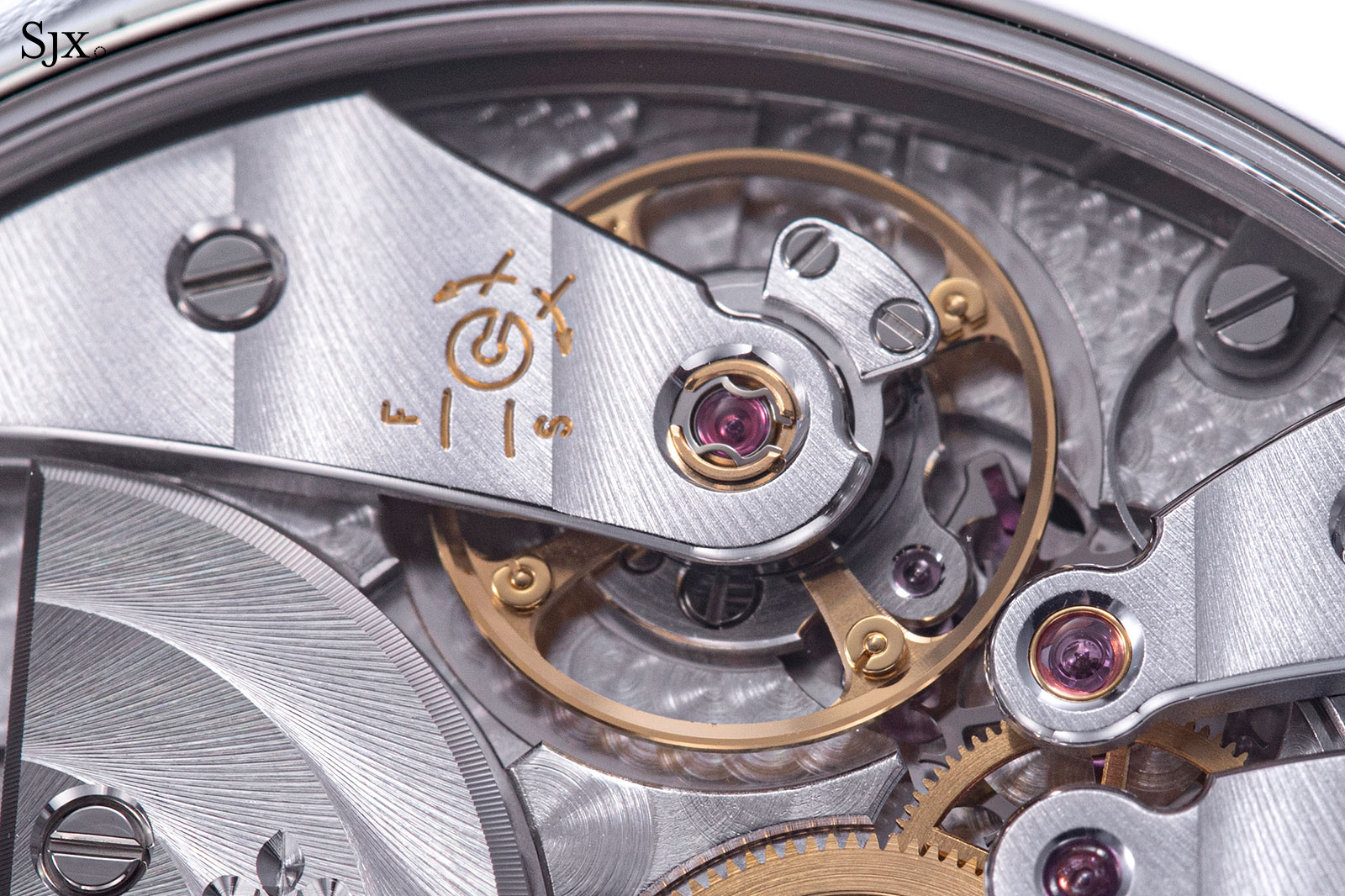
The Gyromax balance with its four regulating weights
The inevitable comparison
While the movement of the ref. 5236P is sufficient on paper appears, it feels like there was some missed opportunities within. Launched alongside the ref. 5236P was the Calatrava ref. 6119 – a three-hand watch that boasts an entirely new movement, the cal. 30-255 PS.
Arguably one of Patek Philippe’s most impressive recent movements, the cal. 30-255 PS is all about chronometry. It has a layout optimised for timekeeping, one that squeezes in two large barrels and a 4 Hz escapement with a high-inertia balance wheel. In other words, the calibre has plenty of torque and would have been an ideal base for the linear calendar module of the ref. 5236P.
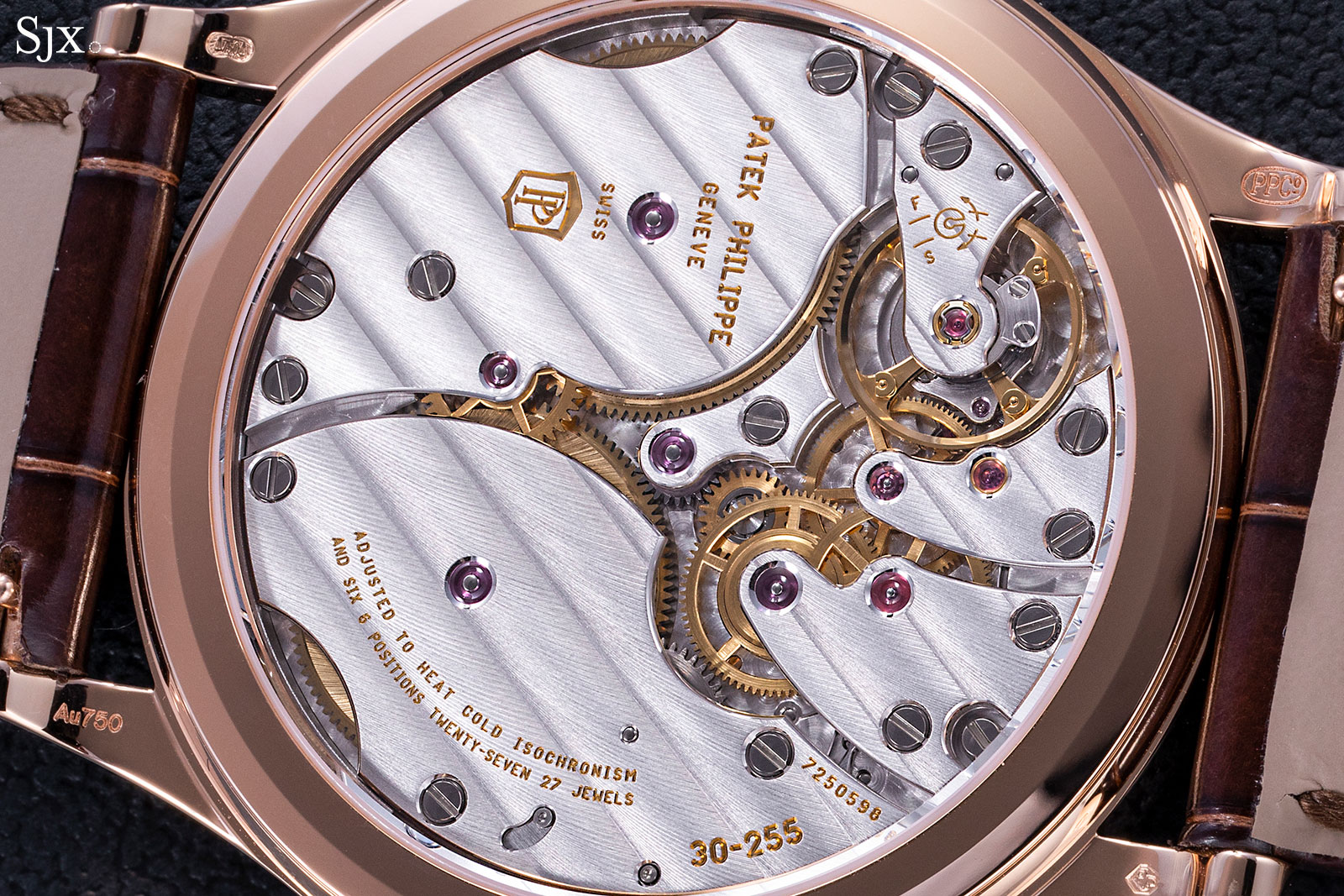
The cal. 30-255 PS of the ref. 6119
In comparison, the cal. 31-260 of the 5236P feels unoptimised in comparison – there is unused space within the movement that might have allowed for a second barrel for higher torque. This is possibly because Patek Philippe prioritised automatic winding over other features. All of the brand’s perpetual and annual calendars are automatic (except for those combined with other complications) – a watch winder can keep the calendar up to date all the time.
Thus, the space that could been occupied by a second barrel is taken up by the micro rotor. While it is an acceptable compromise since the watch functions flawlessly, it is slightly disappointing from a horological perspective considering the huge accomplishment that is the cal. 30-255 of the ref. 6119.
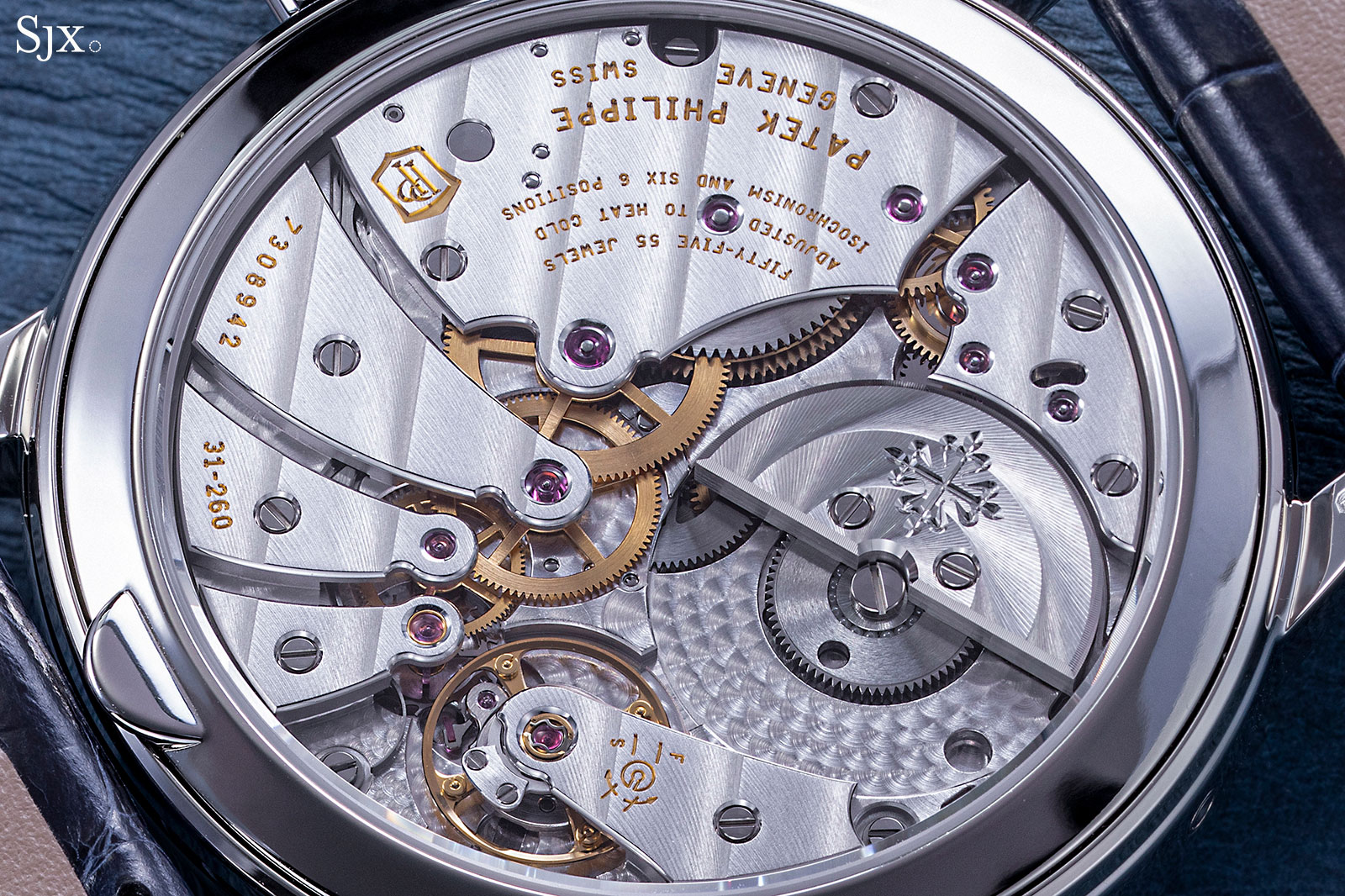
The cal. 31-260 of the ref. 5236P
Aesthetics and finishing
Compared to the movement in the ref. 5235, the cal. 31-260 of the ref. 5236P has been opened up to reveal more of the moving parts. Ordinarily that would be a good thing, but in this case the base movement might not be an ideal candidate for such treatment.
One critique concerns the choice of finger bridges for the going train. Compared to the twin bridges of the ref. 5235 movement that seem to flow cohesively, the finger bridges here are of different shapes and lengths – a necessity of the wheels of the going train – resulting in a somewhat haphazard feel.
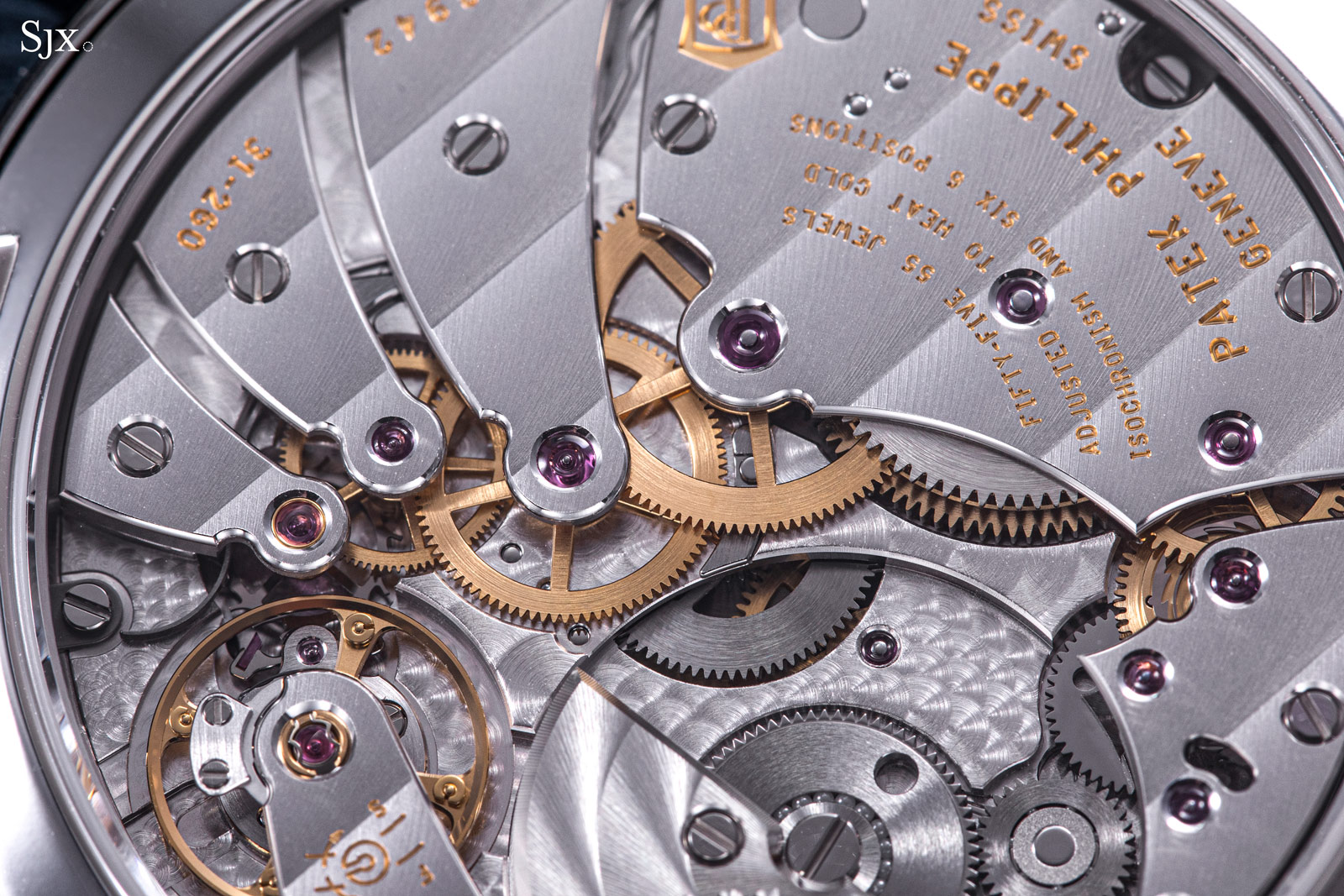
That said, the redesigned bridges do incorporate several outward angles on their edges, which creates appealing, sharp outward points along the anglage. However, the bridges lack sharp, inward corners on the anglage.
While the more numerous and complex bridges give the movement of the ref. 5236P extra detail, it presents a less elegant feel than the simpler forms of the calibre in the ref. 5235, which is simple but more coherent.
Overall, the finishing of the movement in the ref. 5236P is as expected from Patek Philippe – clean and thorough. Notably, the anglage is rounded, polished, and consistent along all the bridges, which also have polished countersinks for all the jewels and screws. And the cotes de Geneve is uniformly applied on all the separate bridges.
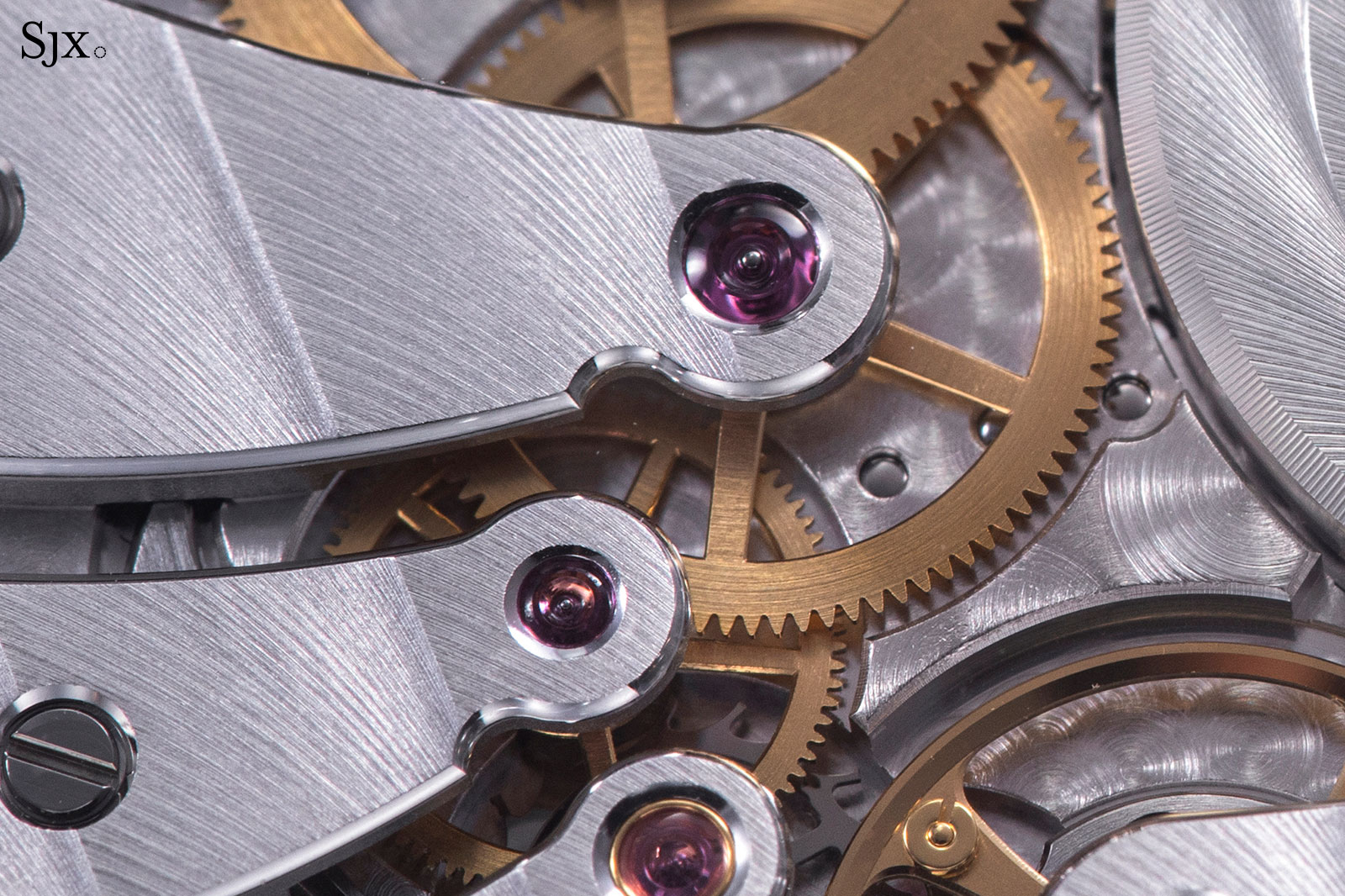
Also pleasing aesthetically is the choice of large jewel bearings, especially for the centre wheel, which are matched by equally broad countersinks that complement the anglage.
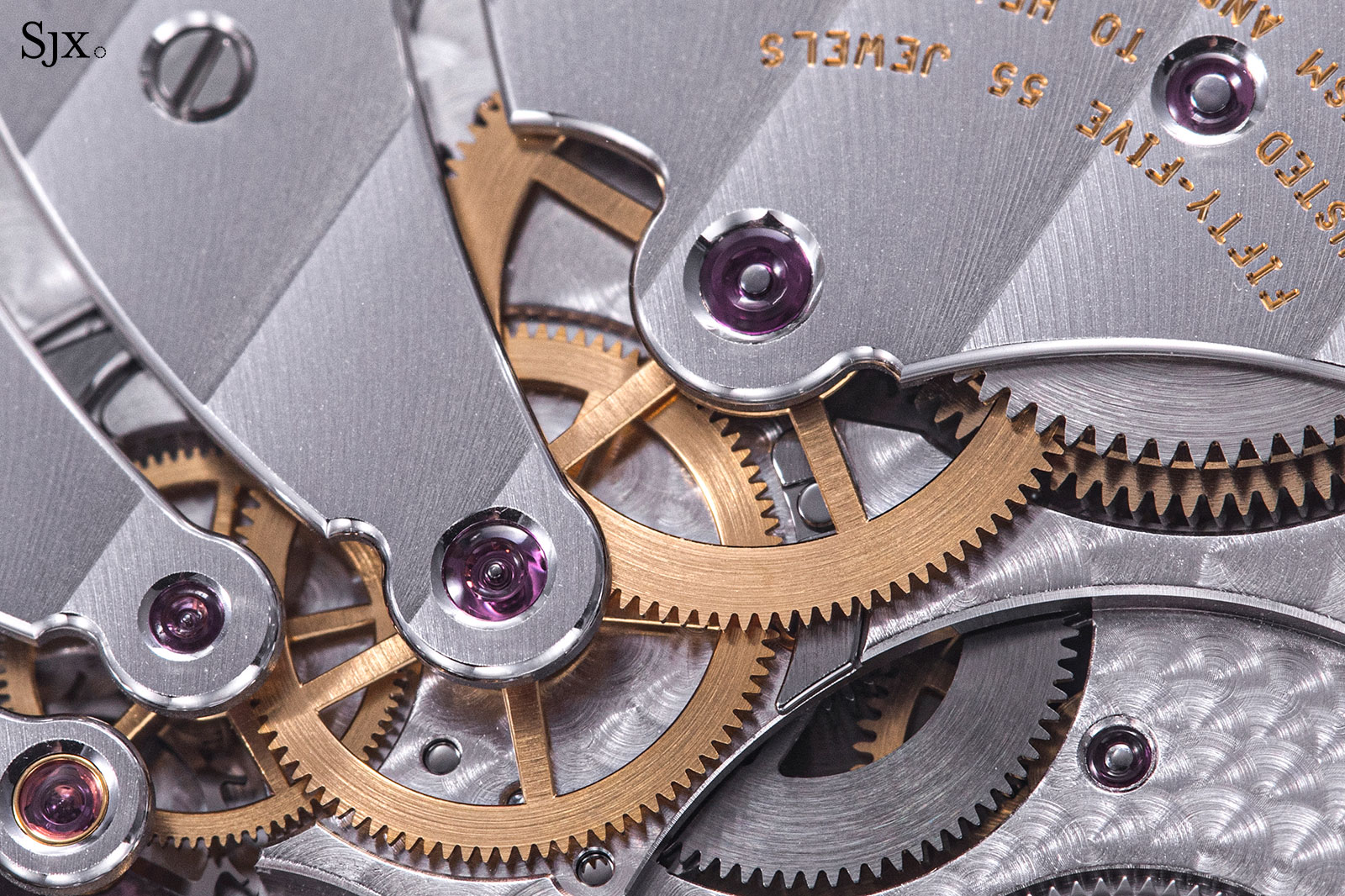
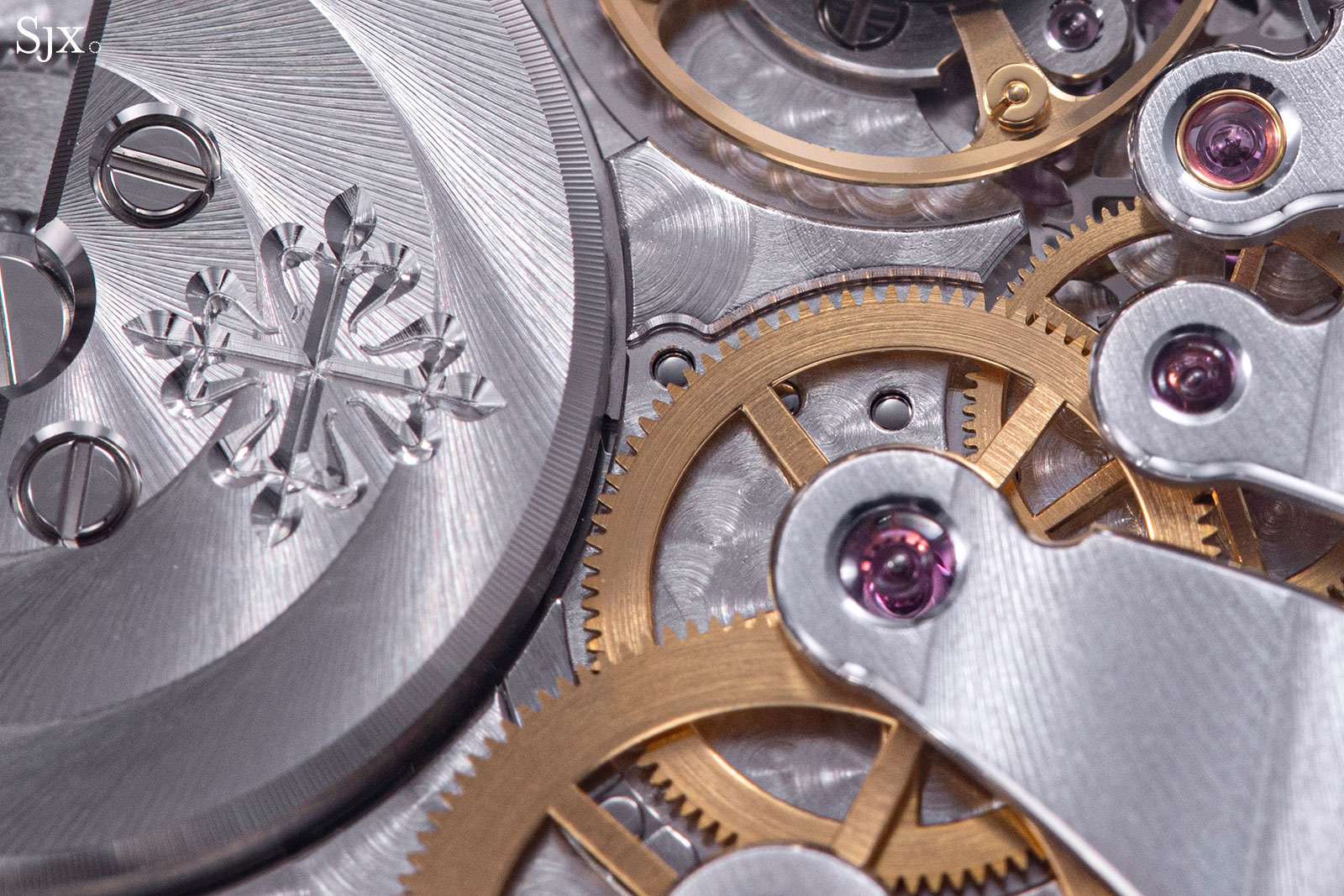
Concluding Thoughts
The ref. 5236P is now clearly the brand’s flagship perpetual calendar watch. With its size and heft, it feels like a flagship model in a tangible size, but also lives up to the billing in terms of technical features. Importantly, the calendar display is impressively large and backed by a smart layout.
Granted, some features of the base movement might seem to be compromises, but they were likely necessitated by the prevailing requirements for the brand, namely automatic winding and slimness.
Overall the ref. 5236P is an accomplished wristwatch that delivers something truly new to the perpetual calendar complication.
Key facts and price
Patek Philippe In-Line Perpetual Calendar
Ref. 5236P-001
Diameter: 41.3 mm
Height: 11.07 mm
Material: Platinum
Crystal: Sapphire
Water resistance: 30 m
Movement: Cal. 31-260 PS QL
Functions: Hours, minutes, seconds, and in-line perpetual calendar with moon phase
Frequency: 28,800 beats per hour (4 Hz)
Winding: Automatic
Power reserve: 38-48 hours
Strap: Alligator with platinum folding clasp
Availability: Now at retailers
Price: US$130,110, or 171,500 Singapore dollars
For more, visit Patek.com.
Back to top.

